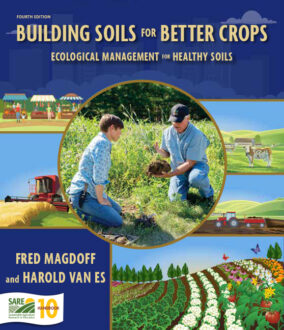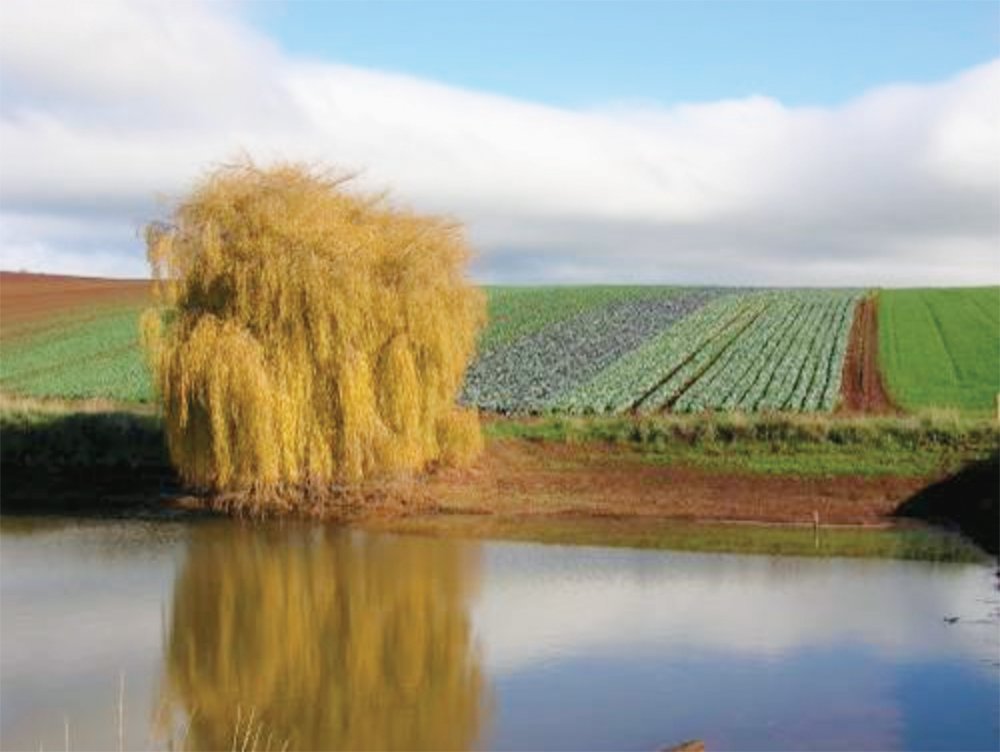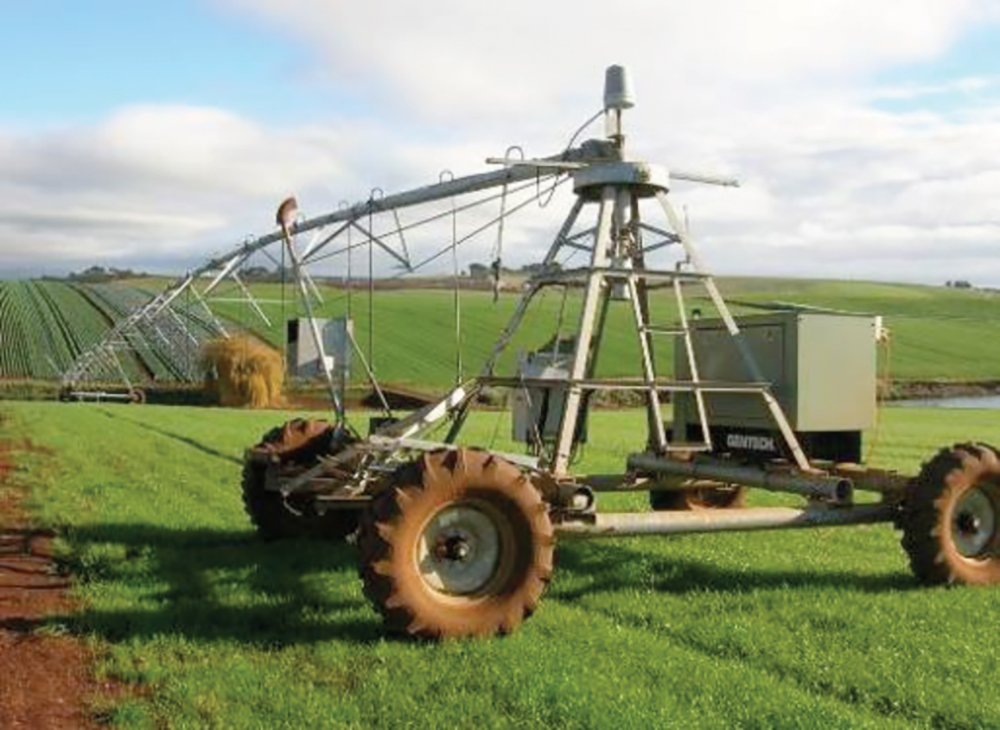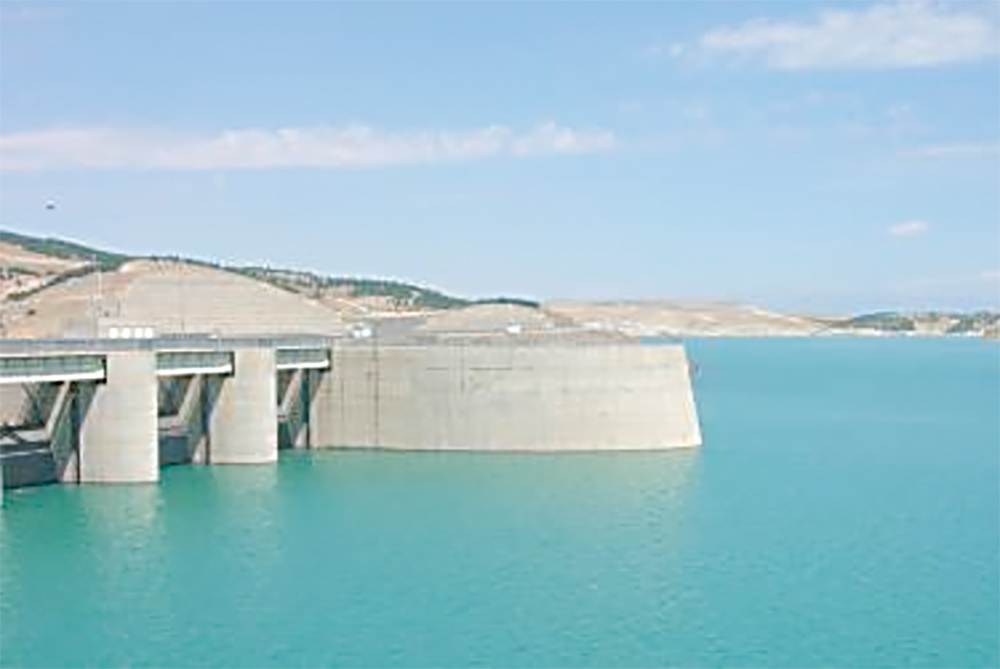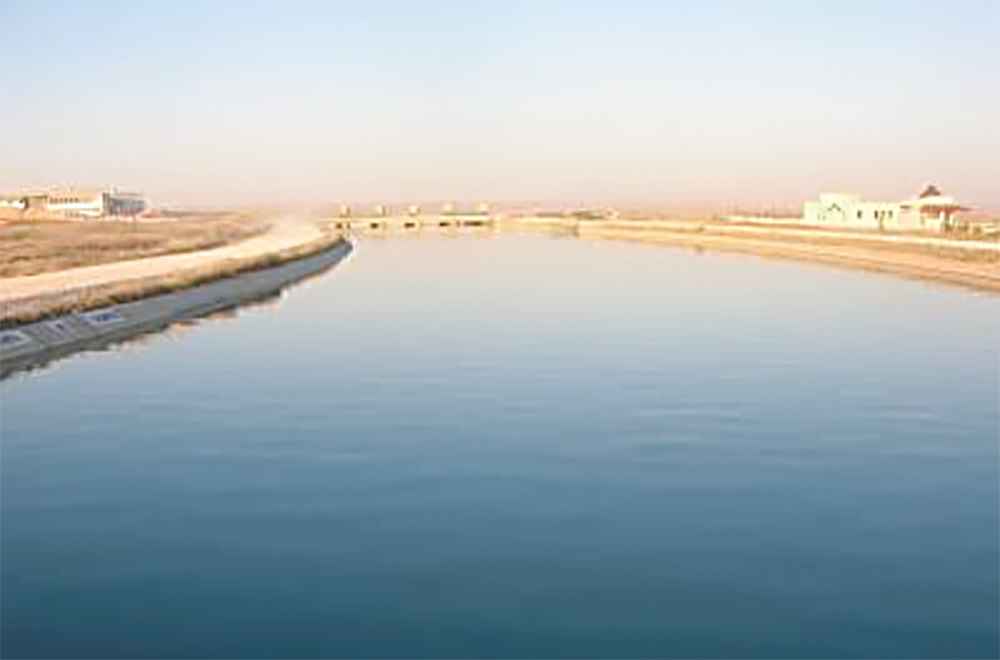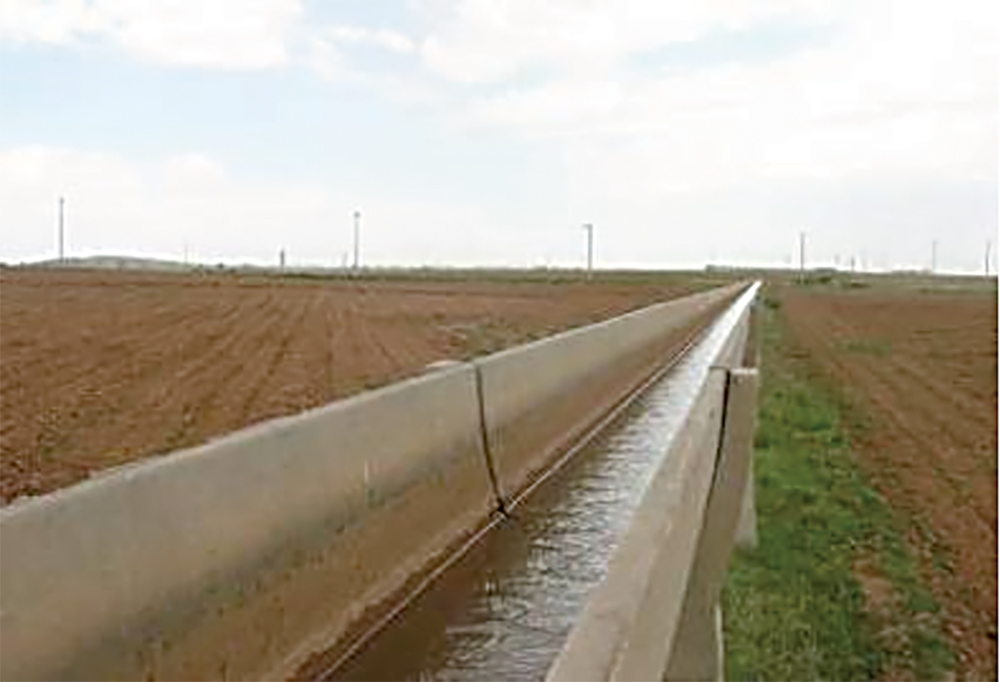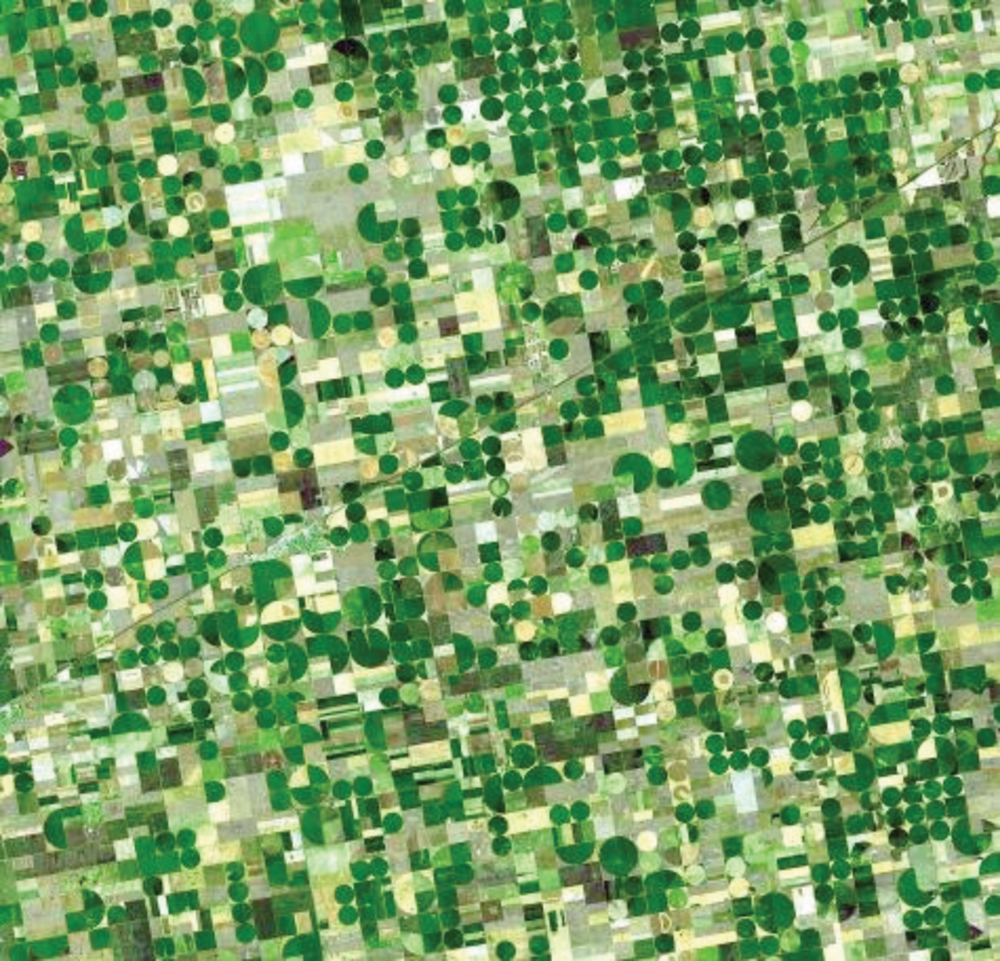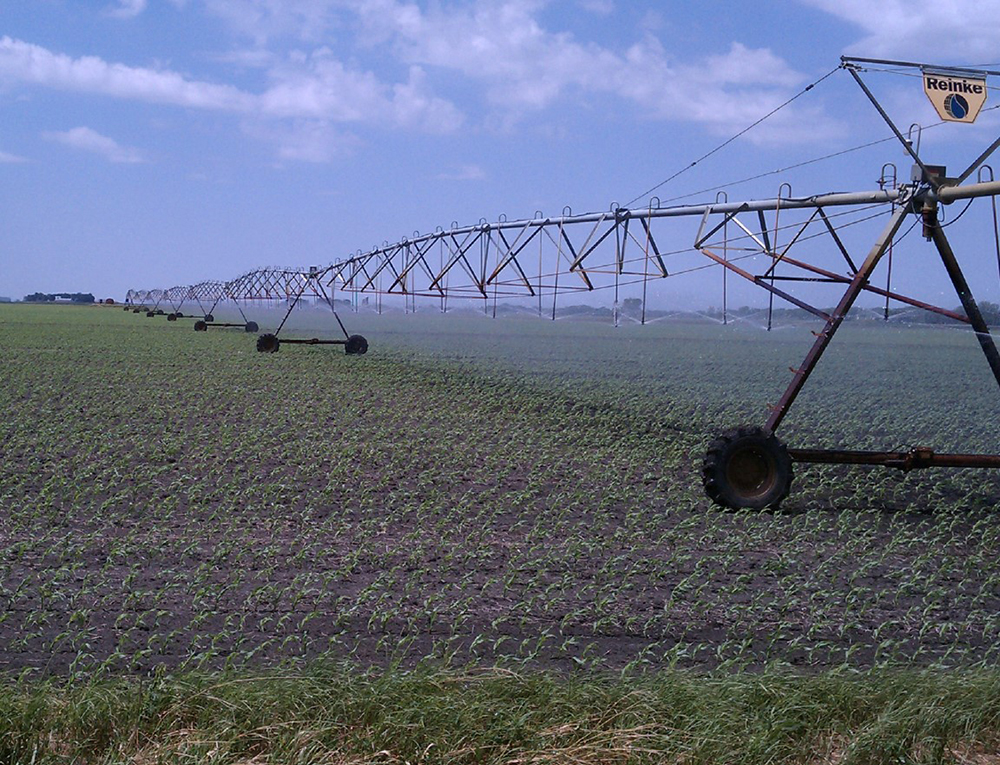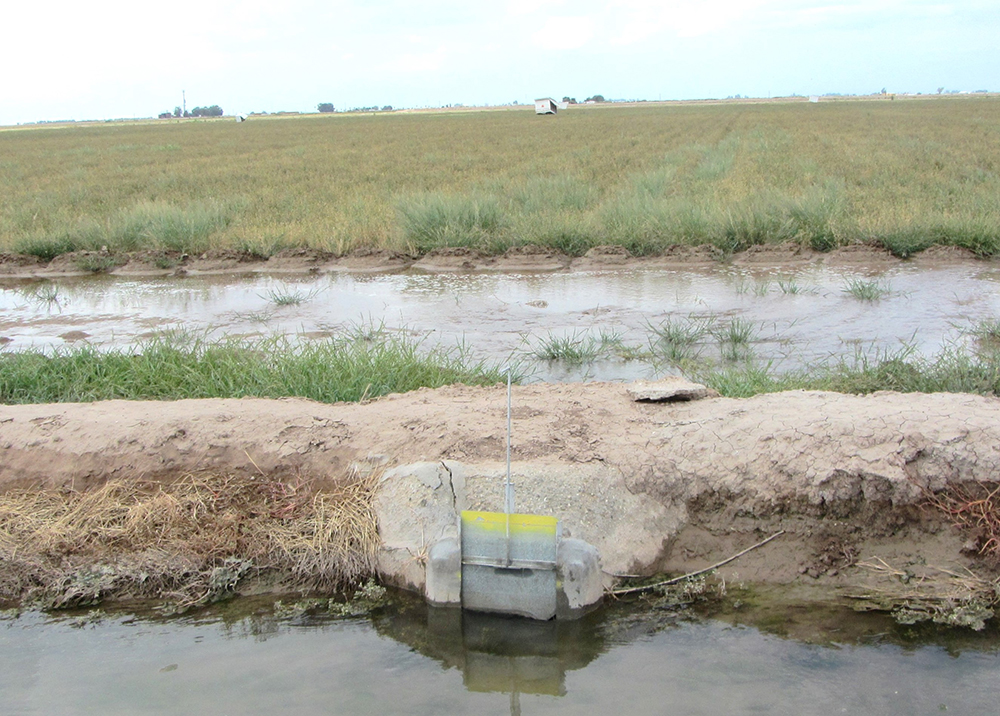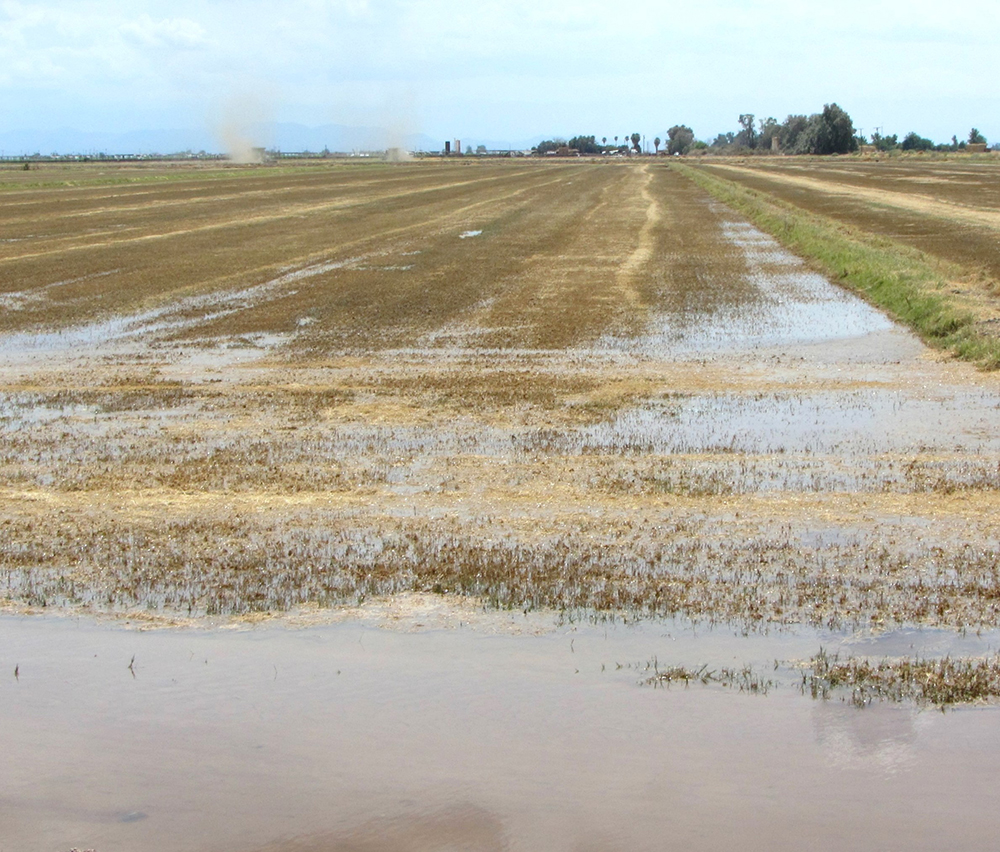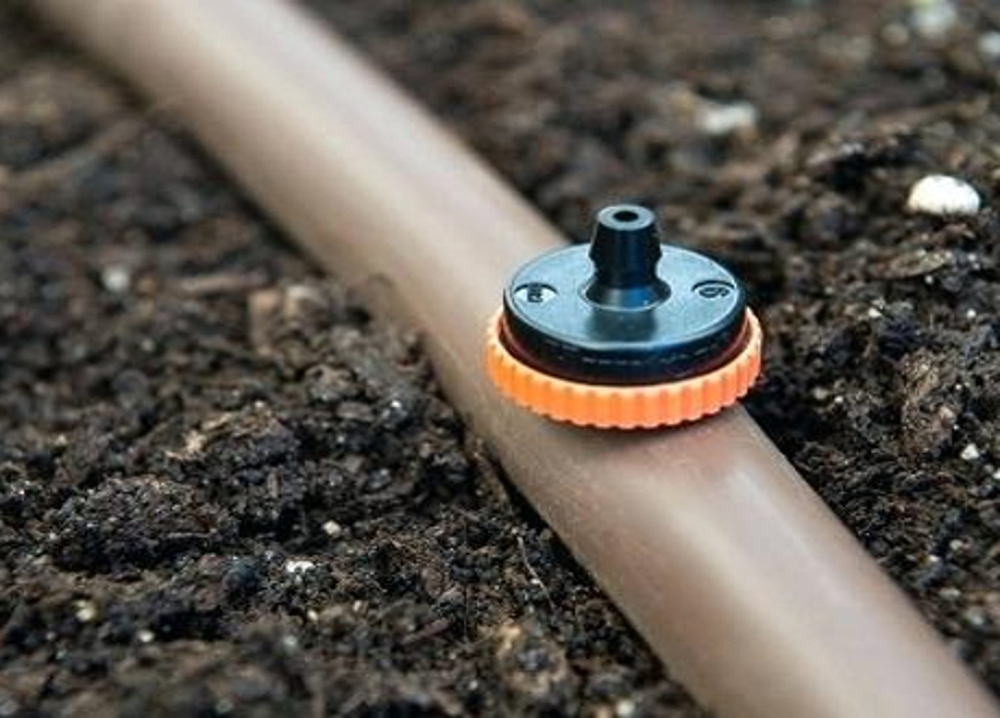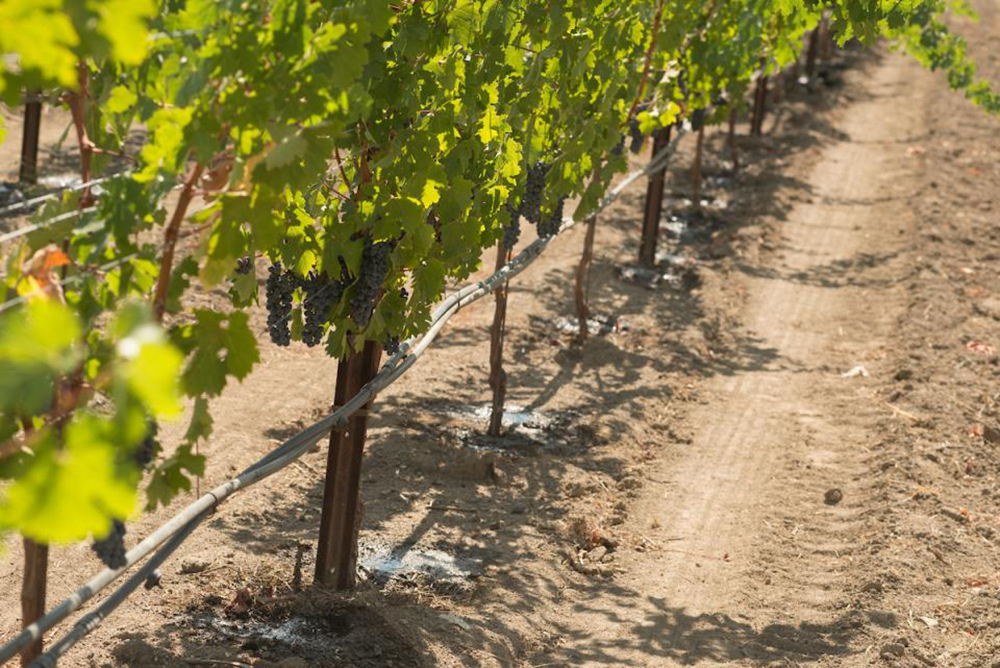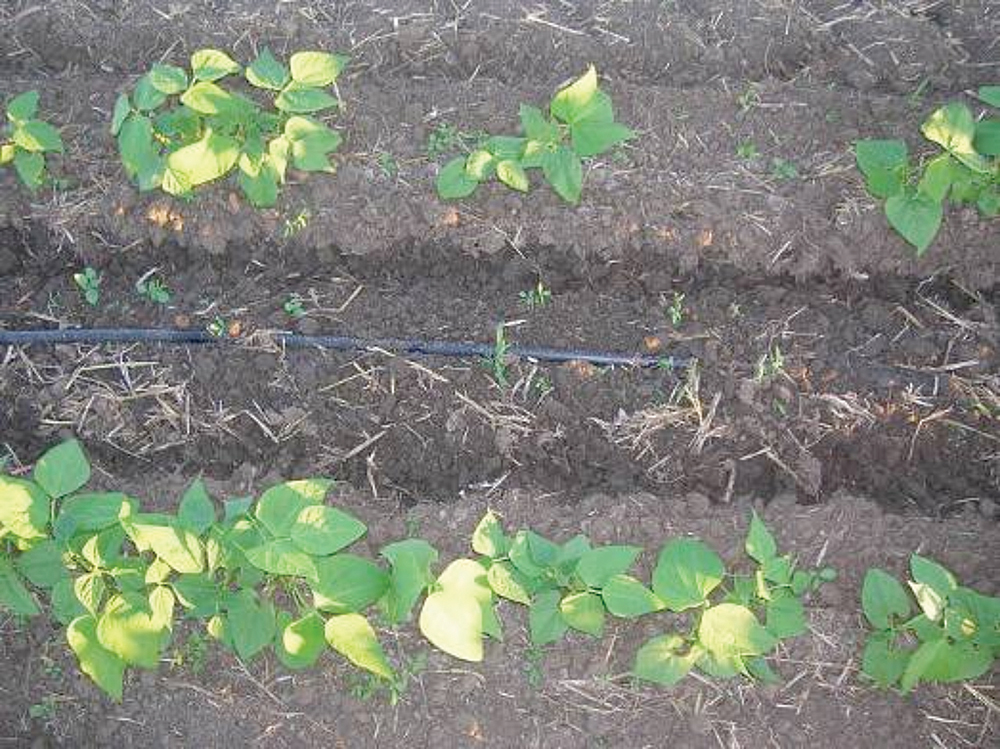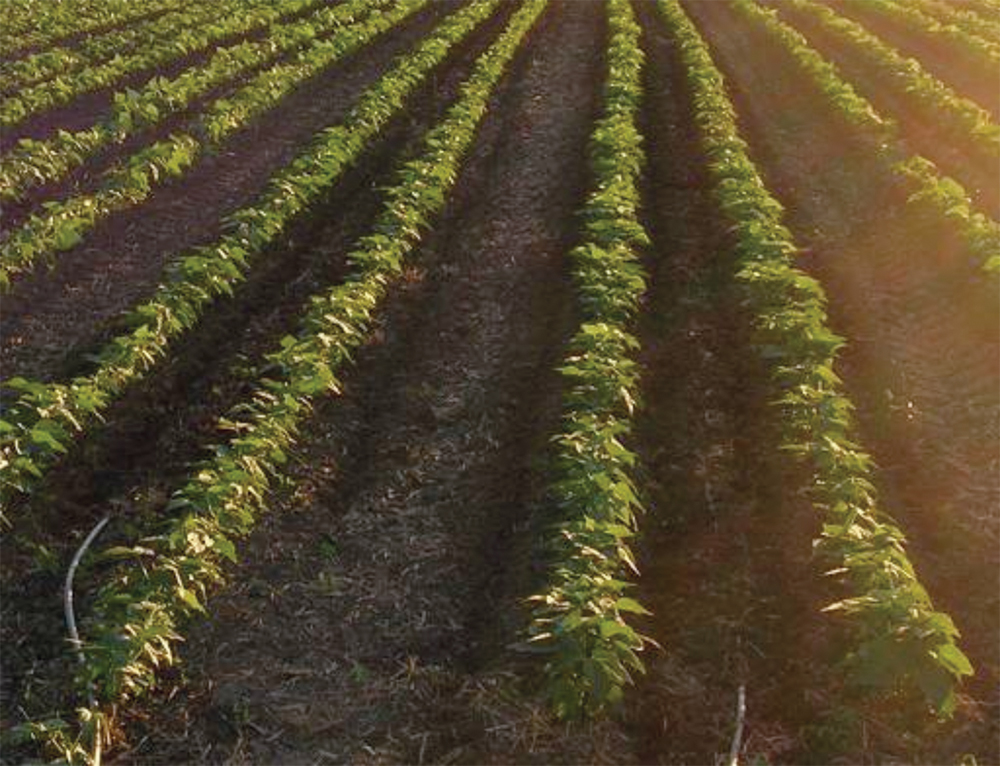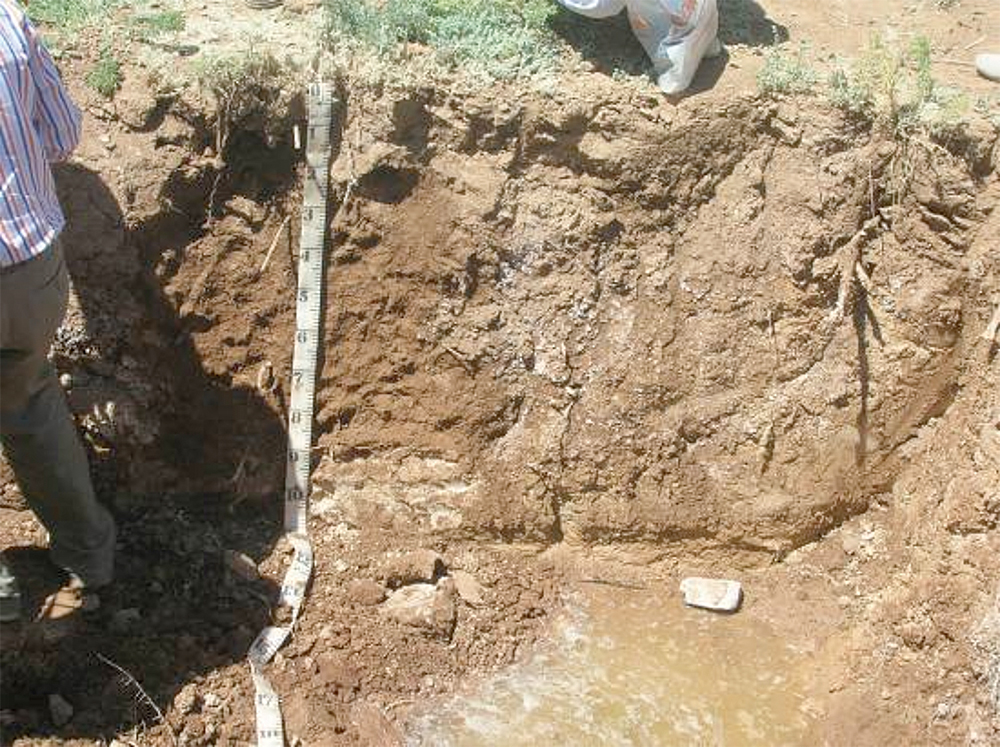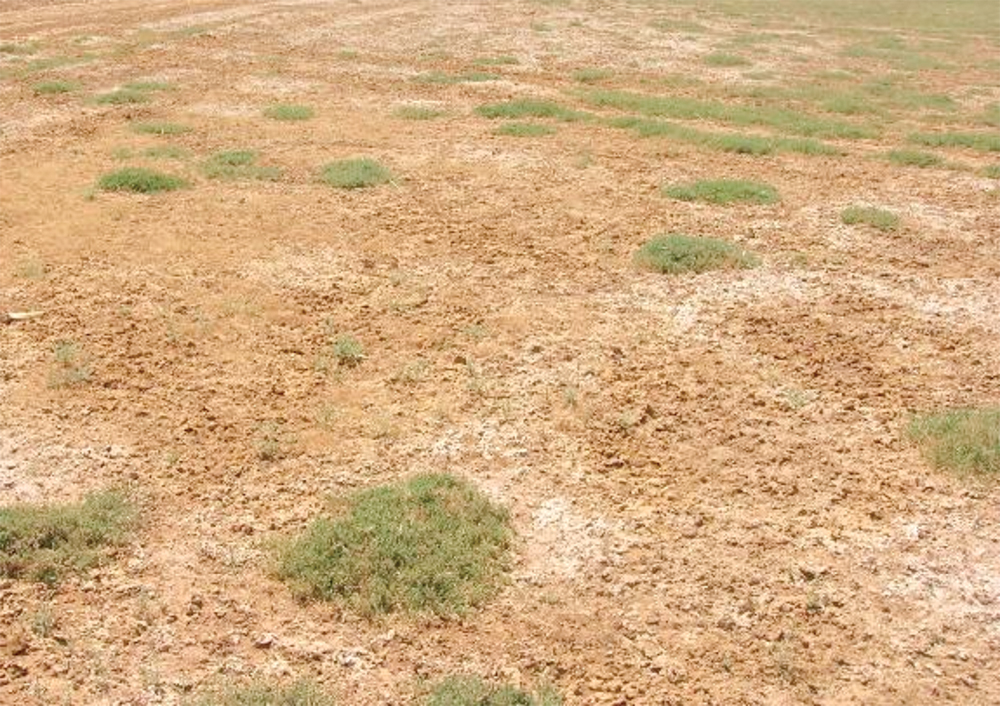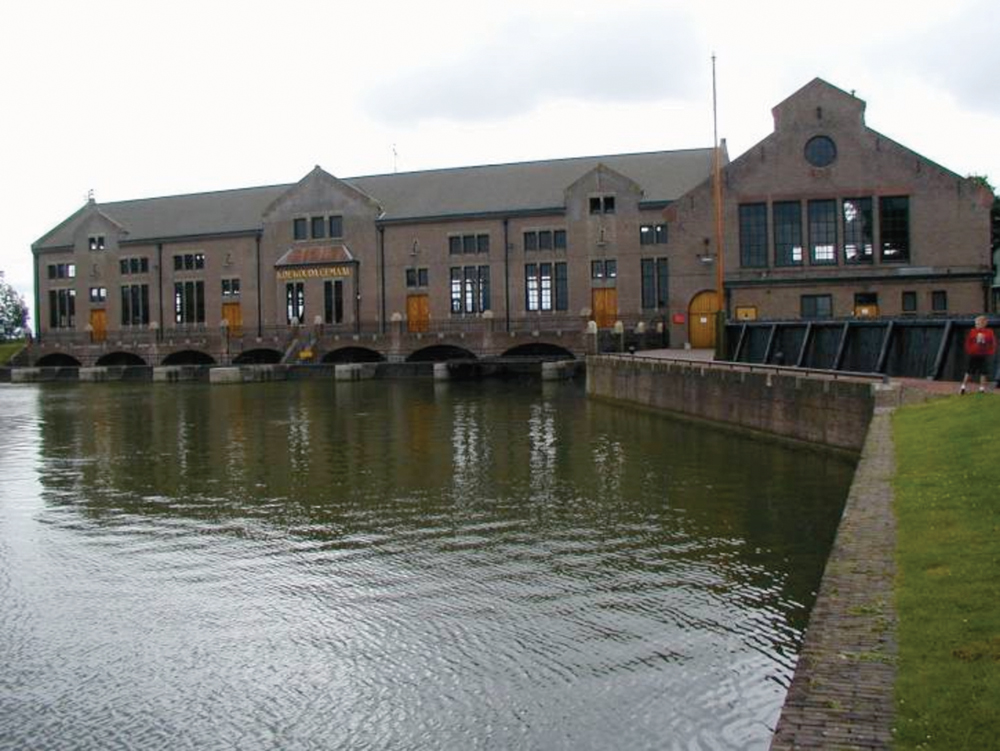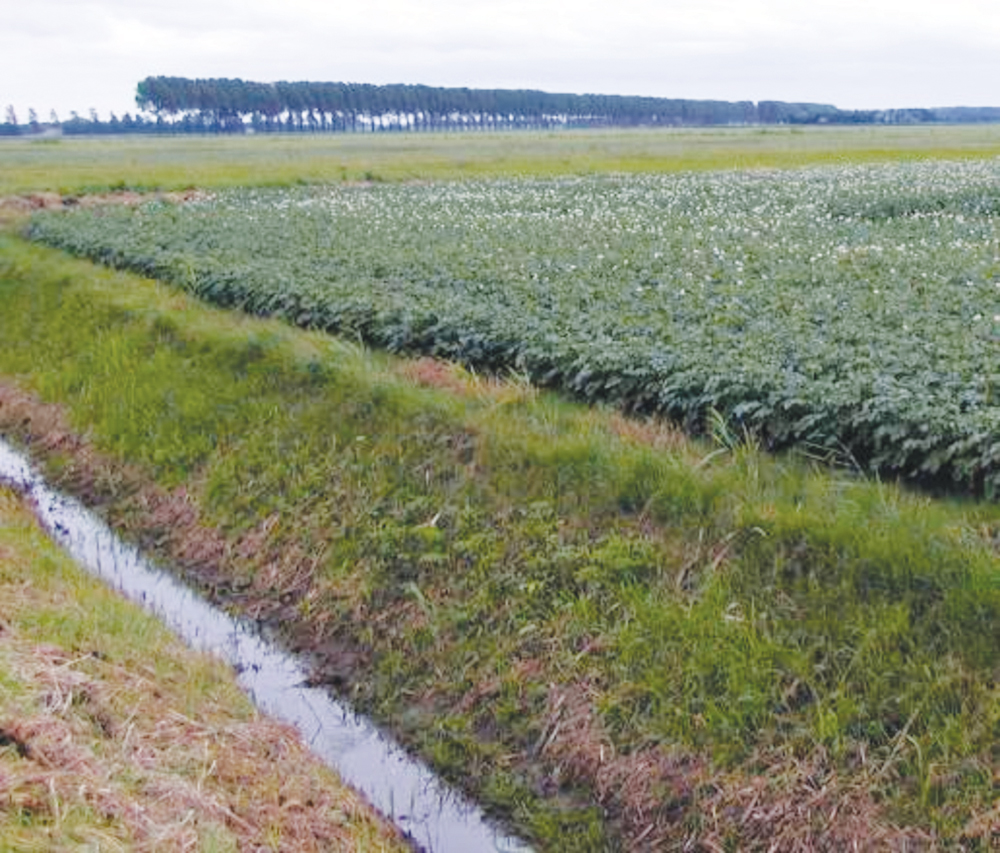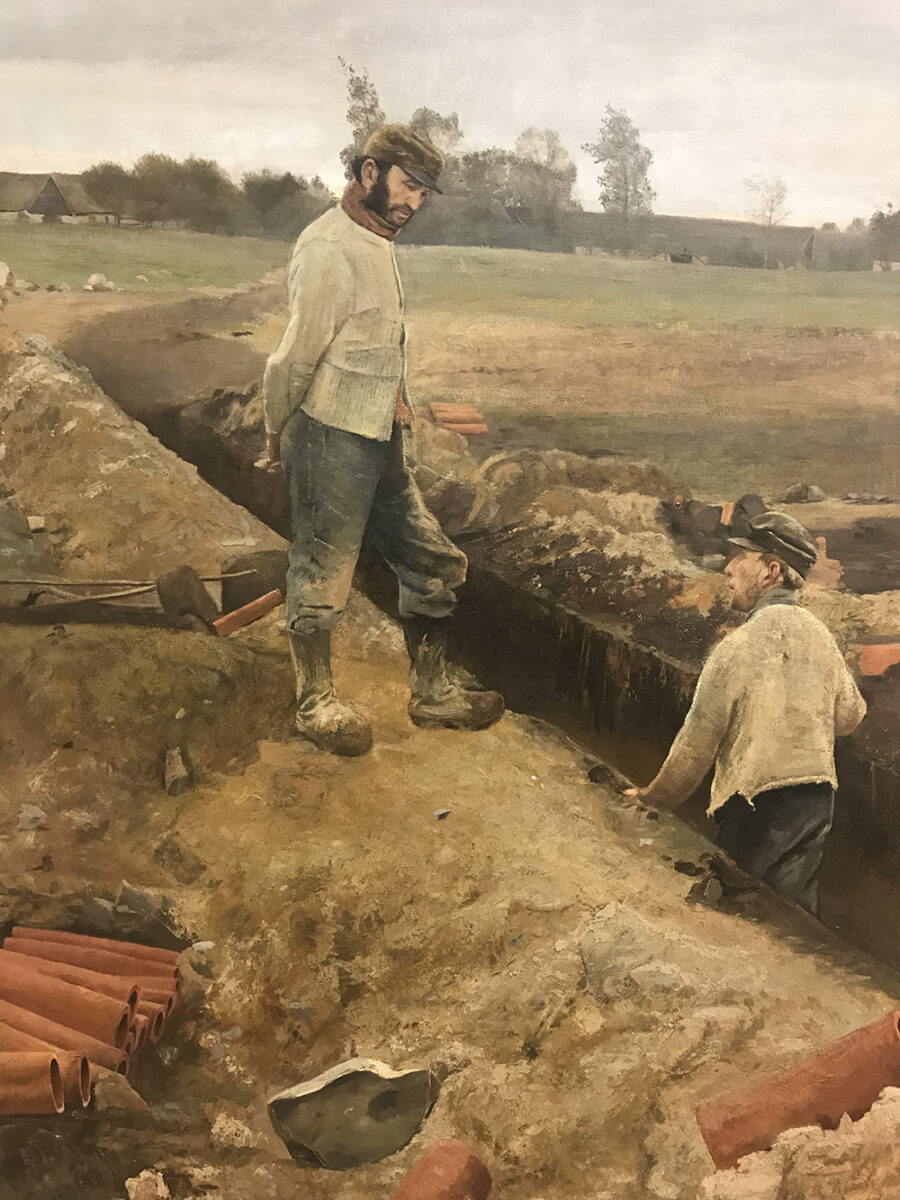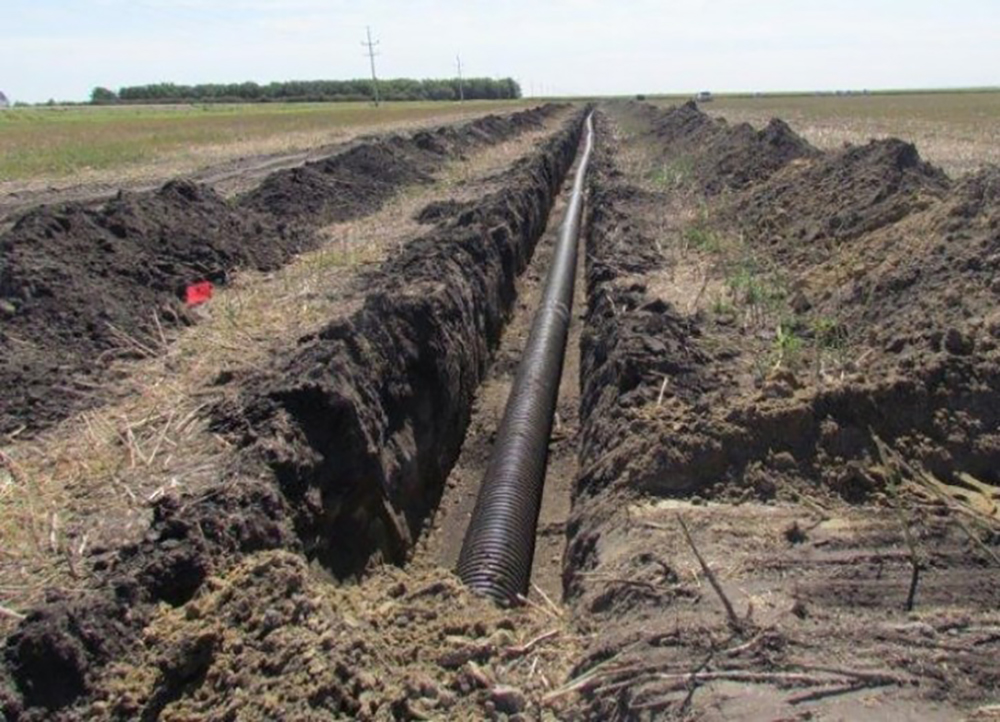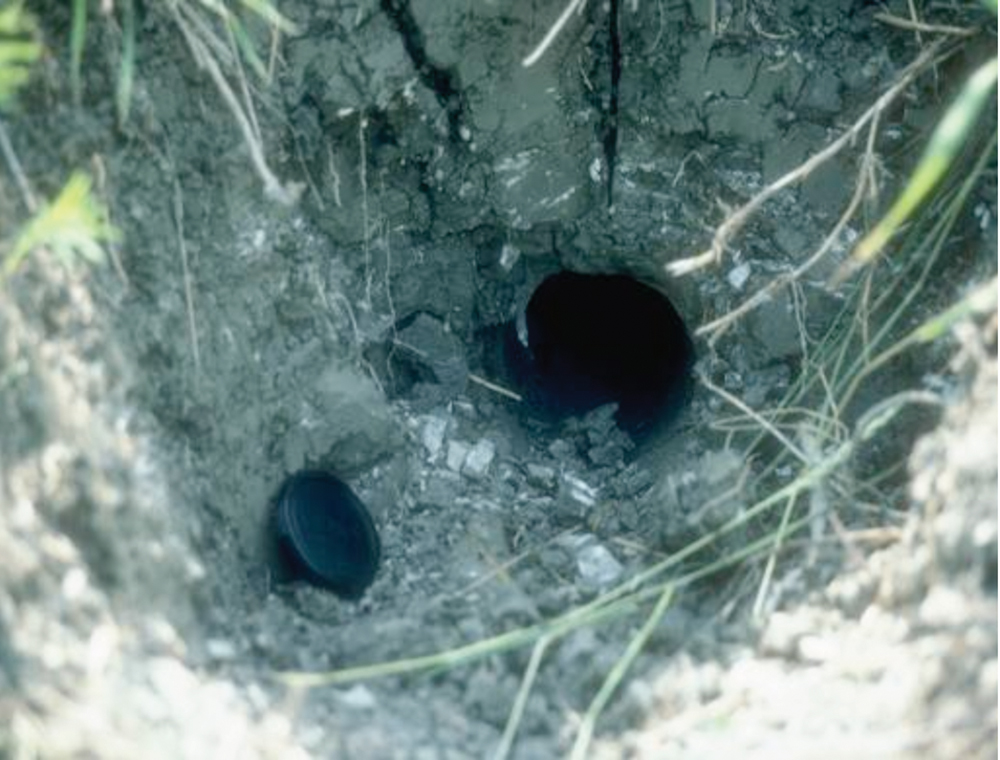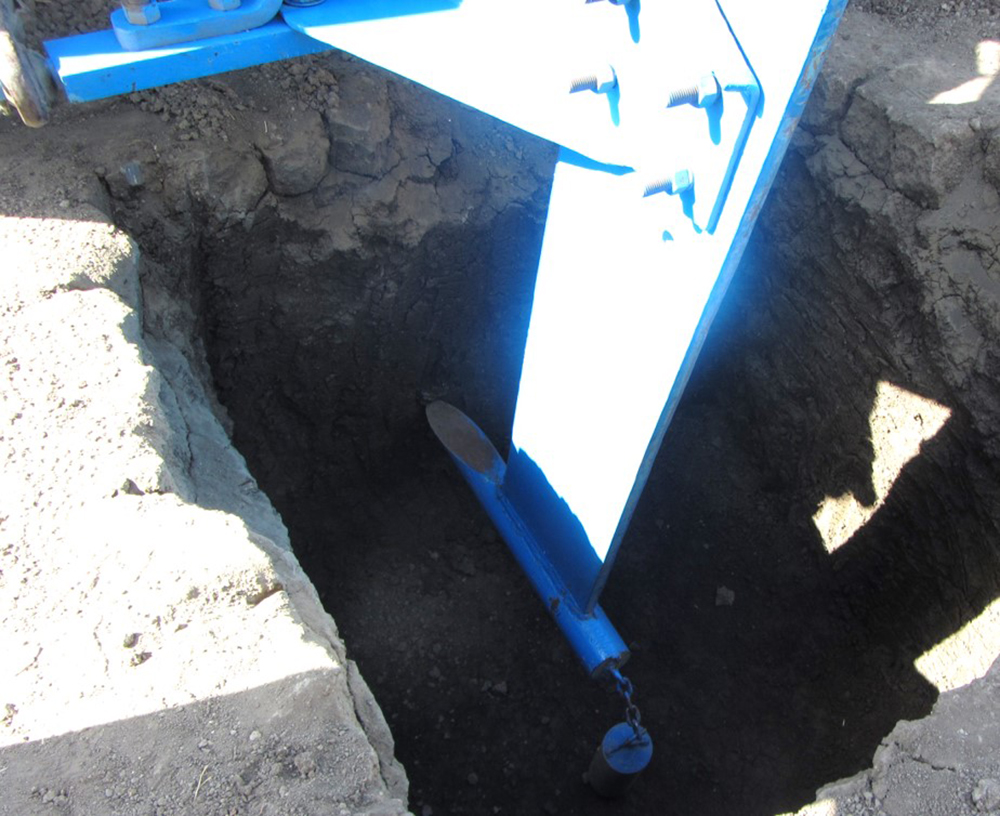But the irrigation that nourished Mesopotamian fields carried a hidden risk. Groundwater in semiarid regions usually contains a lot of salts. … When evaporation rates are high, sustained irrigation can generate enough salt to eventually poison the crops.
—David Montgomery, 2007
Growing seasons around the world rarely have the right amount of precipitation, and deficits and excesses of water are the most significant overall yield-limiting factors to crop production. It is estimated that more than half of the global food supply depends on some type of water management. In fact, the first major civilizations and population centers emerged when farmers started to control water, resulting in more consistent yields and stable food supplies. Examples include Mesopotamia, literally the “land between the rivers” Tigris and Euphrates, the lower Nile Valley and northeastern China. High yields in drained and irrigated areas allowed for the development of trade specialization because crop surpluses no longer required everyone to provide their own food supply. This led to important innovations like markets, writing and transportation. Moreover, new water management schemes forced societies to get organized, work together on irrigation and drainage schemes, and develop laws on water allocations. But water management failures were also responsible for the collapse of societies. Notably, the salinization of irrigated lands in Mesopotamia and filling up of ditches with sediments, often dug and maintained by enslaved peoples, resulted in lost land fertility and an inability to sustain large centrally governed civilizations.
Shortage of water. It is estimated that drought results in more crop yield losses than by all pathogens combined. It is also projected that many of the world’s agricultural regions will be drier in the future. Today, many of the most productive agricultural areas depend on some type of water management. In the United States, average crop yields of irrigated farms are greater than the corresponding yields of dryland farms by 118% for wheat and 30% for corn. At a global scale, irrigation is used on 18% of the cultivated areas, but those lands account for 40% of the world’s food production. The great majority of agricultural lands in the western United States and in other dry climates around the world would not be productive without irrigation water, and the majority of the U.S. horticultural crop acreage, especially in California, is entirely dependent on elaborate irrigation infrastructures. Even in humid regions most high-value crops are grown with supplemental irrigation during dry spells to ensure crop quality and steady supplies for market outlets.
WATER IN FIELDS
Soil conditions may vary significantly within a field, greatly influencing water infiltration and movement. Runoff with intense rainfall is common at the top of a slope or on a slope shoulder, and water tends to accumulate in depressions. Both areas may suffer during very dry periods, with the slope top or shoulder soil having low water storage and with the wet areas in depressions growing plants with shallow root systems that aren’t deep enough to access water lower in the soil when it is dry. And there may be two or more soil types within a field with different physical properties that affect water infiltration and movement. The extent of these variations may be substantial. It is estimated that these areas of year-to-year unstable yields—because of either too little or too much soil moisture—represent from about a quarter to a third of fields in the U.S. Midwest, with possible economic losses of over $500 million per year. Thus, practices such as no-till and cover cropping, and drainage of depressions, can both increase yields and decrease annual variations caused by different patterns of precipitation.
| Table 17.1 Approximate Amounts of Water Needed for Food Production | |
|---|---|
| Product | Gallons of water per pound |
| Wheat | 150 |
| Rice | 300 |
| Corn | 50 |
| Potatoes | 19 |
| Soybeans | 275 |
| Beef | 1,800 |
| Pork | 700 |
| Poultry | 300 |
| Eggs | 550 |
| Milk | 100 |
| Cheese | 600 |
| Almonds | 1,900 |
| Source: FAO | |
Excess of water. To address excess water problems, the best fields in the United States have had drainage systems installed, which make those soils even more productive than they were naturally. Drainage of wet fields overcomes water-logged conditions and allows for a longer growing season because farmers can get onto those fields earlier in the spring and can harvest later in the fall without causing extreme compaction. Drainage also reduces yield losses or even prevents complete crop failures when fields experience excessive precipitation during the early growing season.
The benefits of irrigation and drainage in addressing shortages and excesses of water are thus obvious. They are critical to food security as well as to the agricultural intensification needed to feed a growing global population while protecting natural areas. Concerns with climate change, which is resulting in greater occurrences of deficits and excesses of precipitation, will increase pressure for more irrigation and drainage. But they also exact a price on the environment. Drainage systems provide hydrological shortcuts and are responsible for increased chemical losses to streams, rivers, lakes and estuaries. Similarly, irrigation systems can result in drastic changes in river and estuarine ecosystems, as well as in land degradation through salinization and sodium buildup, and they have been sources of international conflict.
Irrigation
There are different types of irrigation systems, depending on water source, size of the system and water application method. Two main water sources exist: surface water and groundwater. On smaller scales, recycled wastewater and even desalinized seawater are used in densely populated dry areas. Irrigation systems run from small on-farm arrangements using a local water supply to vast, regional schemes that involve thousands of farms and that are controlled by governmental authorities. Conventional water application involves flood (or furrow) irrigation, which is done by gravity flow and is still the most common method around the world. Sprinkler and drip irrigation systems have also become widely adopted due to the increased availability of pumps.
FIRST CONSIDER SOIL IMPROVEMENT
Healthy soils with good and stable aggregation, enhanced organic matter levels and limited or no compaction go a long way toward “drought proofing” your farm. In addition, reduced tillage with residues on the surface also helps to enhance water infiltration and to reduce evaporation losses from the soil. Cover crops, while using water for their growth, can act as a water-conserving surface mulch once they are suppressed. But, of course, water is needed to grow crops, from 19 gallons to hundreds or more gallons of water for each pound of plant or animal product (Table 17.1). (This represents literally hundreds of pounds of water to well over 1,000 pounds of water to produce one pound of food.) And if it doesn’t rain for a few weeks, crops on even the best soils will start to show drought stress. Even in humid regions there can be stretches of dry weather that cause stress and reduce crop yield or quality. Irrigation, therefore, is an essential part of growing crops in many regions of the world. But the healthier your soil, the less irrigation water you will need.
Surface Water Sources
Streams, rivers and lakes have traditionally been the main source of irrigation supplies. Historical efforts to use these waters for irrigation involved the diversion of rivers and then the development of storage ponds. Small-scale systems, like those used by the Anazasi in the southwestern United States and those by the Nabateans in what is now Jordan, involved cisterns and retention ponds that were filled by stream diversions.
Small-scale irrigation systems nowadays tend to pump water directly out of streams or farm ponds (Figure 17.1). These water sources are generally sufficient for cases in which supplemental irrigation is used: in more humid regions where only limited amounts of additional water may be needed for good yields or high-quality crops. Such systems, generally managed by a single farm, have limited environmental impacts. Most states require permits for such water diversions to ensure against excessive impacts on local water resources. Large-scale irrigation schemes have been developed around the world with strong involvement by governments. In the 1930s the U.S. government invested $3 billion to create the intricate Central Valley project in California that has provided a hundredfold return on investment. The Imperial Irrigation District, located in the dry desert of Southern California, was developed in the 1940s with the diversion of water from the Colorado River. Even today, large-scale irrigation systems, like the GAP project in southeastern Turkey (Figure 17.2), are being initiated. Such projects often drive major economic development efforts in the region and function as a source for national or international food or fiber production. On the other hand, large dams also frequently have the detrimental effects of displacing people and flooding productive cropland or important wetlands.
Groundwater
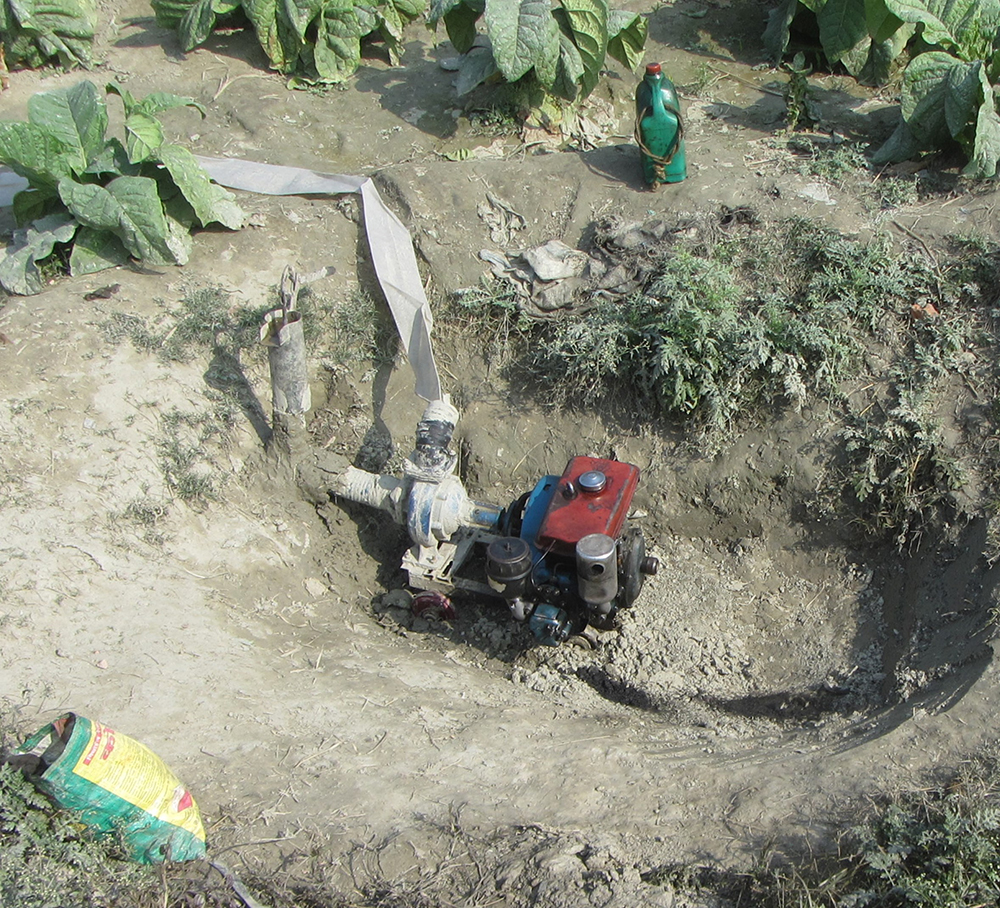
When good aquifers are present, groundwater is a relatively inexpensive source of irrigation water. A significant advantage is that it can be pumped locally and does not require large government-sponsored investments in dams and canals. It also has less impact on regional hydrology and ecosystems, although pumping water from deep aquifers requires significant amounts of energy. And deep groundwater generally contains more dissolved minerals and has greater potential to cause salt buildup after many years. Center-pivot overhead sprinklers (Figure 17.3, right) are often used, and individual systems, irrigating 120–500 acres, typically draw from their own well. A good source of groundwater is critical for the success of such systems, and low salt levels are especially critical to prevent the buildup of soil salinity. Most of the western U.S. Great Plains—much of it part of the former Dust Bowl area—uses center-pivot irrigation systems supported by the large (174,000-square-mile) Ogallala aquifer, which is a relatively shallow and accessible water source (Figure 17.3, left). It is, however, being used faster than it is recharging from rainfall, which is clearly an unsustainable practice. Deeper wells that require more energy and more expense to pump water will make this mining of water an increasingly questionable practice. There are reports of fields that used to be irrigated by single wells now requiring as much as five wells. Similar concerns about excessive groundwater withdrawals exist in other regions, notably in the Upper Gangetic Plain in India, where crop production is very intensive (Figure 17.4).
Recycled Wastewater and Desalinized Seawater
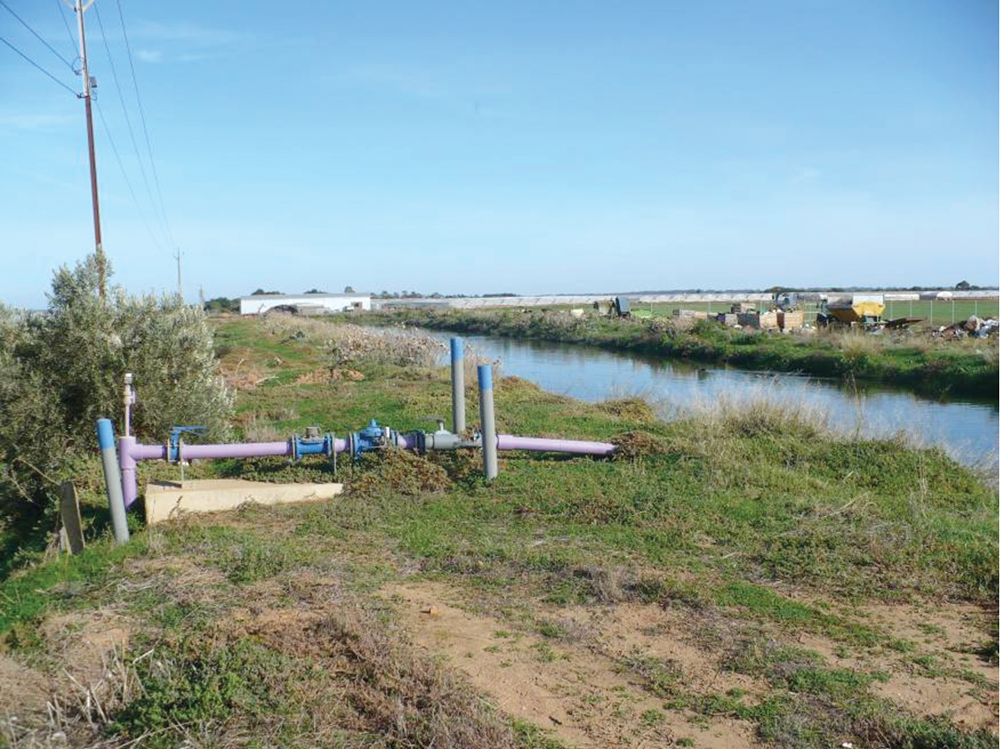
In recent years, water scarcity has forced governments and farmers to look for alternative sources of irrigation water. Since agricultural water does not require the same quality as drinking water, recycled wastewater is a good alternative. It is being used in regions where 1) densely populated areas generate significant quantities of wastewater and are close to irrigation districts, and 2) where surface or groundwater sources are very limited or need to be transported over long distances. Several irrigation districts in the United States are working with municipalities to provide safe recycled wastewater, although some concerns still exist about long-term effects. Other nations with advanced agriculture and critical water shortages, notably Israel and Australia, have also implemented wastewater recycling systems for irrigation purposes (Figure 17.5).
In a few areas of the world, water scarcity has become so critical that seawater is desalinized using reverse osmosis to create fresh water. Most is used for direct human consumption, but increasingly it is also used in high-value specialty crop production. The technology is energy intensive but improvements are making it more efficient and cost effective.
Irrigation Methods
Flood (or furrow) irrigation is the historical approach and remains widely used around the world. It basically involves the simple flooding of a field for a limited amount of time, allowing the water to infiltrate. If the field has been shaped into ridges and furrows, the water is applied through the furrows and infiltrates down and laterally into the ridges (Figure 17.6). Such systems mainly use gravity flow and require nearly flat fields. These systems are by far the least expensive to install and use, but their water application rates are very inexact and typically uneven. Also, these systems are most associated with salinization concerns, as they can easily raise groundwater tables. Flood irrigation is also used in rice production systems, in which dikes are used to keep the water ponded.
MAIN TYPES OF IRRIGATION
- Flood (or furrow)
- Sprinkler
- Drip (or trickle)
- Manual
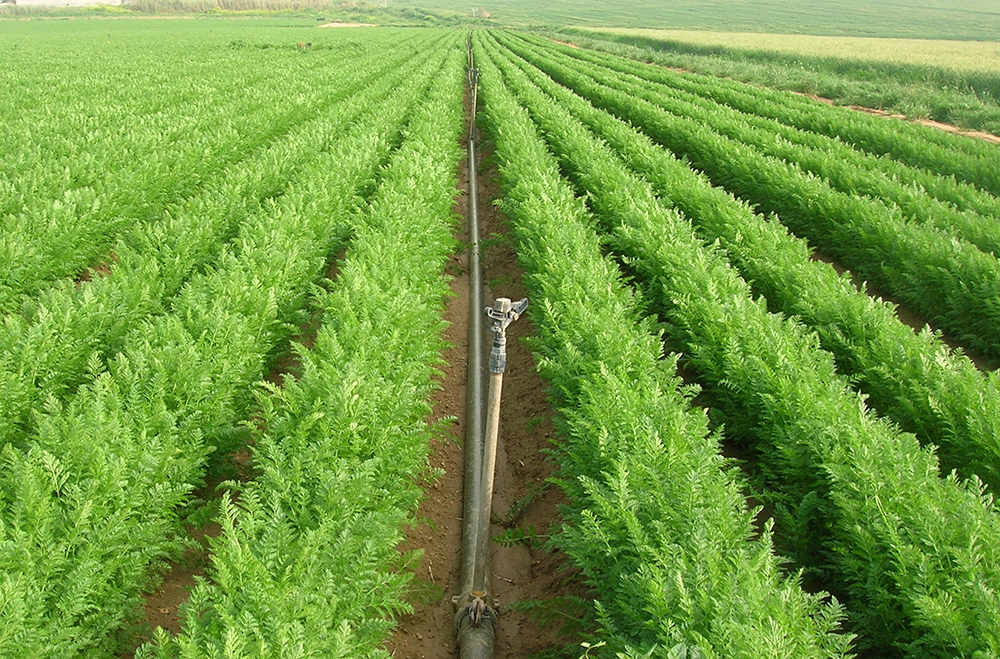
Sprinkler irrigation systems apply water through pressurized sprinkler heads and require conduits (pipes) and pumps. Common systems include stationary sprinklers on risers (Figure 17.7) and traveling overhead sprinklers (center-pivot and lateral; figures 17.1 and 17.3). These systems allow for more precise water application rates than flooding systems and more efficient water use. But they require larger up-front investments, and the pumps use energy. Large, traveling gun sprayers can efficiently apply water to large areas and are also used to apply liquid manure.
Localized irrigation, especially useful for tree crops or landscaping in dry areas, can often be accomplished using micro-sprinklers that use small-diameter “spaghetti tubing” and relatively small pumps (Figure 17.8), making the system comparatively inexpensive.
Drip (or trickle) irrigation systems also use flexible or spaghetti tubing combined with small emitters. They are mostly used in bedded or tree crops using a line source with many regularly spaced emitters or are applied directly near the plant through a point-source emitter (figures 17.8 and 17.9). The main advantage of drip irrigation is the parsimonious use of water and the high level of control.
Drip irrigation systems are relatively inexpensive when used with high-value crops but are not economical for large-scale grain or forage crop production. They can be installed easily, use low pressure and have low energy consumption. In small-scale systems like market gardens, pressure may be applied through a gravity hydraulic head from a water container on a small platform or even through a human-powered treadle pump. In subsurface drip irrigation systems, lines and emitters are semi-permanently buried to allow field operations. Such systems require attention to the placement of the tubing and emitters; they need to be close to the plant roots, as lateral water flow from the trickle line through the soil is limited.
Manual irrigation involves watering cans, buckets, garden hoses, inverted soda bottles, etc. Although it doesn’t fit with large-scale agriculture, it is still widely used in gardens and in small-scale agriculture in underdeveloped countries.
Fertigation is an efficient method to apply fertilizer to plants through pumped systems like sprinklers and drip irrigation. The fertilizer source is mixed with the irrigation water to provide low doses of liquid fertilizer that are readily absorbed by the crop. This also allows for “spoon feeding” fertilizers to the crop through multiple small applications, which would otherwise be a logistical challenge. The fertilizer material needs to be of very high quality with drip systems so that water emitters don’t clog.
Environmental Concerns and Management Practices
Irrigation has numerous advantages, but significant concerns exist as well. The main threat to soil health in dry regions is the accumulation of salts, and in some cases also sodium. As salt accumulation increases in the soil, crops have more difficulty getting the water that’s there. When sodium accumulates, aggregates break down and soils become dense and impossible to work (Chapter 6). Over the centuries, many irrigated areas have been abandoned due to salt accumulation, and it is still a major threat in several areas in the United States and elsewhere (Figure 17.10). Salinization is the result of the evaporation of irrigation water, which leaves salts behind. It is especially prevalent with flood irrigation systems, which tend to over-apply water and can raise saline groundwater tables. Once the water table gets close to the surface, capillary water movement transports soil water to the surface, where it evaporates and leaves salts behind. When improperly managed, this can render soils unproductive within a matter of years. Salt accumulation can also occur with other irrigation practices, even with drip systems, especially when the climate is so dry that leaching of salts does not occur through natural precipitation.
The removal of salts is difficult, especially when lower soil horizons are also saline. Irrigation systems in arid regions should be designed to supply water and also to remove water, implying that irrigation should be combined with drainage. This may seem paradoxical, but salts need to be removed by application of extra water to dissolve the salts, leach them out of the soil and subsequently remove the leachate through drains or ditches, where the drain water may still create concerns for downstream areas due to its high salt content. The lower Nile Valley, one of the long-term success stories of irrigated agriculture, provided irrigation during the river’s flood stage in the fall and natural drainage after it subsided to lower levels in the winter and spring. In some cases, deep-rooted trees are used to lower regional water tables, which is the approach used in the highly salinized plains of the Murray Darling Basin in southeastern Australia. Several large-scale irrigation projects around the world were designed only for the water supply component, and funds were not allocated for drainage systems, ultimately causing salinization.
CONCERNS WITH IRRIGATION
- accumulation of salts and/or sodium in the soil
- energy use
- increased potential for nutrient and pesticide loss
- water use diverted from natural systems
- displacement of people by large dams and possible flooding of productive cropland, wetlands or archaeological sites
- competing users: urban areas and downstream communities
The removal of sodium from the soil can be accomplished by exchanging it with another cation, calcium, which is typically done through the application of gypsum. In general, salinity and sodicity are best prevented through good water management. (See Chapter 20 for a discussion of reclaiming saline and sodic soils.)
Salt accumulation is generally not an issue in humid regions, but over-irrigation raises concerns about nutrient and pesticide leaching losses in these areas. High application rates and amounts can push nitrates and pesticides past the root zone and increase groundwater contamination. Soil saturation from high application rates can also generate denitrification losses. A bigger issue with irrigation, especially at regional and global scales, is the high water consumption levels and competing interests. Agriculture consumes approximately 70% of the global water withdrawals. Humans use less than a gallon of water per day for direct consumption, but about 150 gallons are needed to produce a pound of wheat and 1,800 gallons are needed for a pound of beef or almonds (Table 17.1). According to the U.S. Geological Survey, 68% of high-quality groundwater withdrawals in the United States are used for irrigation. Is this sustainable? The famous Ogallala Aquifer mostly holds “ancient” water that accumulated during previous wetter climates. As mentioned earlier, withdrawals are currently larger than the recharge rates, and this limited resource is therefore slowly being mined. In the case of the Aral Sea—formerly the fourth largest inland freshwater body in the world—the diversion of rivers for irrigated cotton farming in the former Soviet Union resulted in a 90% decrease in the area of the sea. It also became severely contaminated with drainage water from agricultural fields.
Good Irrigation Management
- Build soil to be more resistant to crusting and drought by increasing organic matter contents, aggregation and rooting volume.
- Use water conservatively: consider deficit irrigation scheduling.
- Monitor soil, plants and the weather to precisely estimate irrigation needs.
- Use precise water application rates; do not over-irrigate.
- Use water storage systems to accumulate rainfall when feasible.
- Use good-quality recycled wastewater when available.
- Reduce tillage and leave surface residues.
- Use mulches to reduce surface evaporation.
- Integrate water and fertilizer management to reduce losses.
- Prevent salt or sodium accumulation by applying basic principles of salinity management: regularly test the soil and irrigation water; calculate the leaching requirements; leach out the salts beyond the root zone; reduce sodium contents through gypsum application; and in some cases, grow salt-tolerant crops.
Several large irrigation systems affect international relations. The high withdrawal rates from the Colorado River diminish it to a trickle by the time it reaches the U.S.-Mexico border and the estuary in the Gulf of California. Similarly, Turkey’s decision to promote agricultural development through the diversion of Euphrates waters has created tensions with the downstream countries, Syria and Iraq, and has contributed to their political turmoil.
Irrigation Management at the Farm Level
Sustainable irrigation management and preventing salt and sodium accumulation require solid planning, appropriate equipment and monitoring. A first step is to build the soil so it optimizes water use by the crop. As we discussed in chapters 5 and 6, soils that are low in organic matter and high in sodium have low infiltration capacities due to surface sealing and crusting from low aggregate stability. Overhead irrigation systems often apply water as “hard rain,” creating further problems with surface sealing and crusting.
Healthy soils have more water supply capacity than soils that are compacted and depleted of organic matter. It is estimated that for every 1% loss in organic matter content in the surface foot, soil can hold 16,500 gallons less of plant-available water per acre. Additionally, surface compaction creates lower root health and density, and hard subsoils limit rooting volume. These processes are captured by the concept of the optimum water range (which we discussed in Chapter 6) where the combination of compaction and lower plant-available water retention capacity limits the soil water range for healthy plant growth. Such soils therefore have less efficient crop water use and require additional applications of irrigation water. In fact, it is believed that many farms in humid climates have started to use supplemental irrigation because their soils have become compacted and depleted of organic matter. As we discussed before, poor soil management is often compensated for by increased inputs.
Reducing tillage, adding organic amendments and preventing compaction can increase water storage. A long-term experiment showed that reducing tillage and using crop rotations increased plant-available water capacity in the surface horizon by up to 34% (Table 17.2). When adding organic matter, consider stable sources that are mostly composed of “very dead” materials such as composts. They are more persistent in soil and are a primary contributor to soil water retention. But don’t forget fresh residues (the “dead”) that help form new and stable aggregates. Increasing rooting depth greatly increases plant water availability by extending the volume of soil available for roots to explore. When distinct plow pans are present, ripping through them makes subsoil water accessible to roots. Practices like strip-till can increase rooting depth and also result in long-term increases in organic matter and water storage capacity.
| Table 17.2 Plant-Available Water Capacity in Long-Term Tillage and Rotation Experiments in New York | |||
|---|---|---|---|
| Tillage experiments | Plant-available water capacity (%) | ||
| Plow till | No till | % increase | |
| Silt loam (33 years) | 24.4 | 28.5 | 17% |
| Silt loam (13 years) | 14.9 | 19.9 | 34% |
| Clay loam (13 years) | 16 | 20.2 | 26% |
| Rotation Experiment | Continuous corn | Corn after grass | % increase |
| Loamy sand (12 years) | 14.5 | 15.4 | 6% |
| Sandy clay (12 years) | 17.5 | 21.3 | 22% |
| Source: Moebius et al. (2008) | |||
These practices have the most significant impact in humid regions, where supplemental irrigation is used to reduce drought stress during dry periods between rainfall events. Building a healthier soil will reduce irrigation needs and conserve water because increased plant water availability extends the time until the onset of drought stress and greatly reduces the probability of stress. For example, let’s assume that a degraded soil with a plow pan (A) can provide adequate water to a crop for eight days without irrigation, and a healthy soil with deep rooting (B) allows for 12 days. A 12-day continuous drought, however, is much less likely. Based on climate data for the northeastern United States, the probability of such an event in the month of July is 1 in 100 (1%), while the probability for an 8-day dry period is 1 in 20 (5%). The crops growing on soil A would run out of water and suffer stress in July in 5% of years, while the crops on soil B would be stressed in only 1% of years. A healthy soil would reduce or eliminate the need for irrigation in many cases.
Increasing surface cover, especially with heavy mulch, significantly reduces evaporation from the soil surface. Cover crops can increase soil organic matter and provide surface mulch, but caution should be used with cover crops because when growing, they can consume considerable amounts of water that may be needed to leach salts or to supply the cash crop.
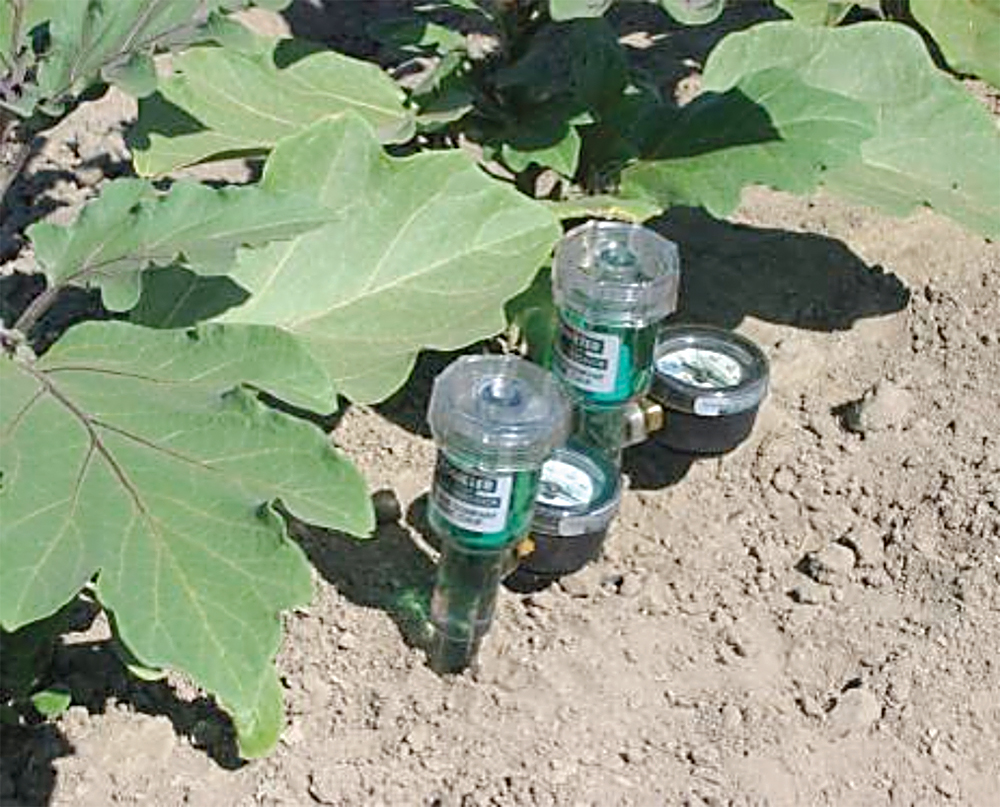
Conservative water use prevents many of the problems that we discussed above. This can be accomplished by monitoring the soil, the plants or weather indicators and applying water only when needed. Soil sensors like tensiometers (Figure 17.11), moisture blocks, TDR (time-domain reflectometry) and capacitance probes can evaluate soil moisture conditions. When the soil moisture levels become critically low, irrigation systems can be turned on and water applications can be made to meet the crop’s needs without excess. The crop itself can also be monitored, as water stress results in increased leaf temperatures that can be detected with thermal or near infrared imaging.
Another approach involves using weather information from either government weather services or small, on-farm weather stations to estimate the balance between natural rainfall and evapotranspiration. Electronic equipment is available for continuously measuring weather indicators, and they can be read from a distance using wireless or phone communication. Computer technology and site-specific water and fertilizer application equipment, now available with large modern sprinkler systems, allow farmers to tailor irrigation to sub-acre-scale localized water and fertilizer needs. Researchers have also demonstrated that deficit irrigation—water applications that are less than 100% of evapotranspiration—can provide equal yields with reduced water consumption and promote greater reliance on stored soil water. Deficit irrigation is used purposely with grapevines that need a modest amount of water stress to enrich quality-enhancing constituents like anthocyanins.
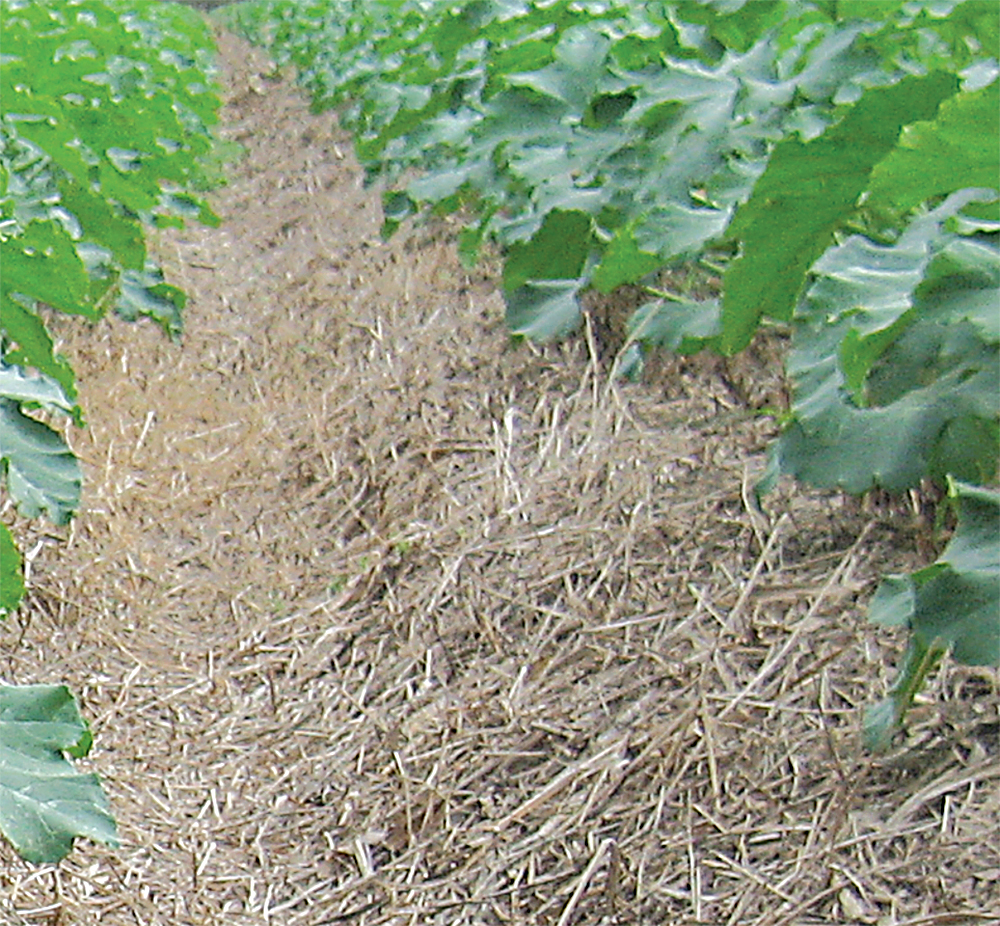
Many of these practices can be effectively combined. For example, a vegetable grower in Australia plants on beds with subsurface drip irrigation and uses controlled traffic (Figure 17.12). A sorghum-sudan cover crop is planted during the wet season and mulched down after maturing, leaving a dense mulch. The subsurface drip irrigation is installed in the beds and stays in place for five or more years (in contrast, annual removal and reinstallation are necessary with tilled systems). No tillage is performed, and vegetable crops are planted using highly accurate GPS technology to ensure that they are within a couple of inches of the drip emitters.
Drainage
Soils that are naturally poorly drained and have inadequate aeration are generally high in organic matter content. But poor drainage makes them unsuitable for growing most crops other than a few water-loving plants like rice and cranberries. When such soils are artificially drained, they become very productive, as the high organic matter content provides all the good qualities we discussed in earlier chapters. Over the centuries, humans have converted swamps into productive agricultural land by digging ditches and canals, later also combined with pumping systems to remove the water from low-lying areas. The majestic Aztec city of Tenochtitlan was located in a swampy area of Lake Texcoco where food was grown on chinampas, raised beds that were built up with rich mud from dug canals (the lake was subsequently drained by the Spanish and is now the Mexico City metropolitan area). Large areas of the Netherlands and eastern England were drained with ditches to create pasture and hay land to support dairy-based agriculture. Excess water was removed via extensive ditch and canal systems by windmill power (a signature landscape of Holland) and later by steam- and oil-powered pumping stations (Figure 17.13). In the 1800s and early 1900s clay drain tiles were increasingly installed (Figure 17.14, left) because they are buried and don’t require fields to be broken up by ditches. Current drainage efforts are primarily accomplished with subsurface flexible corrugated PVC tubes that are installed with laser-guided systems (Figure 17.14, right), and increasingly powerful drain plows allow drain lines to be installed rapidly. In the United States, land drainage efforts have been significantly reduced as a result of wetland protection legislation, and large-scale, government-sponsored projects are no longer initiated. But at the farm level, recent adoption of yield monitors on crop combines has quantified the economic benefits of drainage on existing cropland, and additional drainage lines are being installed at an accelerated pace in many of the very productive lands in the U.S. Corn Belt and elsewhere.
Benefits of Drainage
Drainage lowers the water table by removing water through ditches or tubes (Figure 17.15). The main benefit is that it creates a deeper soil volume that is adequately aerated for growing common crop plants. If crops are grown that can tolerate shallow rooting conditions, like grasses for pastures or hay, no artificial drainage may be needed and the water table can remain relatively close to the surface (Figure 17.15a) or drainage lines can be spaced far apart, thereby reducing installation and maintenance costs, especially in low-lying areas that require pumping. But most commercial crops, like corn, alfalfa and soybeans, require a deeper aerated zone, and subsurface drain lines need to be installed 3–4 feet deep and spaced 20–80 feet apart, depending on soil characteristics (Figure 17.15b, c).
Drainage increases the timeliness of field operations and reduces the potential for compaction damage. Farmers in humid regions have limited numbers of dry days for spring and fall fieldwork, and inadequate drainage then prevents field operations prior to the next rainfall. With drainage, field operations can commence within several days after rain. As we discussed in chapters 6 and 15, most compaction occurs when soils are wet and in the plastic state, and drainage helps soils transition into the friable state more quickly during drying periods, except for most clays. Runoff potential is also generally reduced by subsurface drainage because compaction is reduced and soil water content is decreased by removal of excess water. This allows the soil to absorb more water through infiltration.
Installing drains in poorly drained soils therefore has agronomic and environmental benefits because it reduces compaction and loss of soil structure. This also addresses other concerns with inadequate drainage, like high nitrogen losses through denitrification. A large fraction of denitrification losses can occur as nitrous oxide, which is a potent greenhouse gas. As a general principle, croplands that are regularly saturated during the growing season should either be drained, or reverted to pasture or natural vegetation.
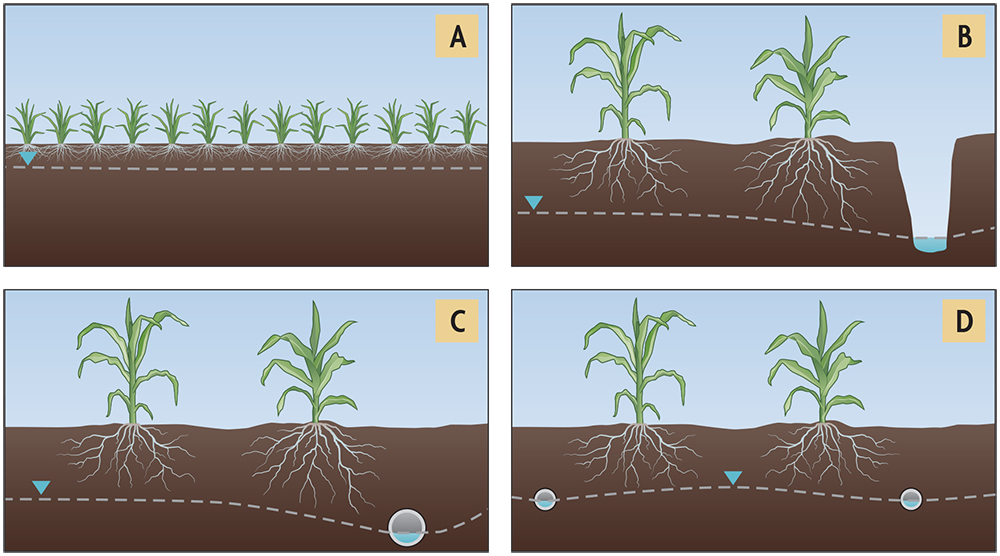
Types of Drainage Systems
Ditching was used to drain lands for many centuries, but most agricultural fields are now drained through perforated corrugated PVC tubing that is installed in trenches and backfilled (Figure 17.14, right). (They are still often referred to as drain “tile,” although that word dates back to the clay pipes.) Subsurface drain pipes are preferred in a modern agricultural setting, as ditches interfere with field operations and take land out of production. A drainage system still needs ditches at the field edges to convey the water away from the field to wetlands, streams or rivers (Figure 17.13, right).
IS DRAINAGE REALLY NEEDED?
Croplands with shallow or perched water tables benefit from drainage. But prolonged water ponding on the soil surface is not necessarily an indication of a shallow water table. Inadequate drainage can also result from poor soil structure (Figure 17.16). Intensive use, loss of organic matter and compaction make a soil drain poorly in wet climates. It may be concluded that the installation of drainage lines will solve this problem. Although this may help reduce further compaction, the correct management strategy is to build soil health and increase its permeability.
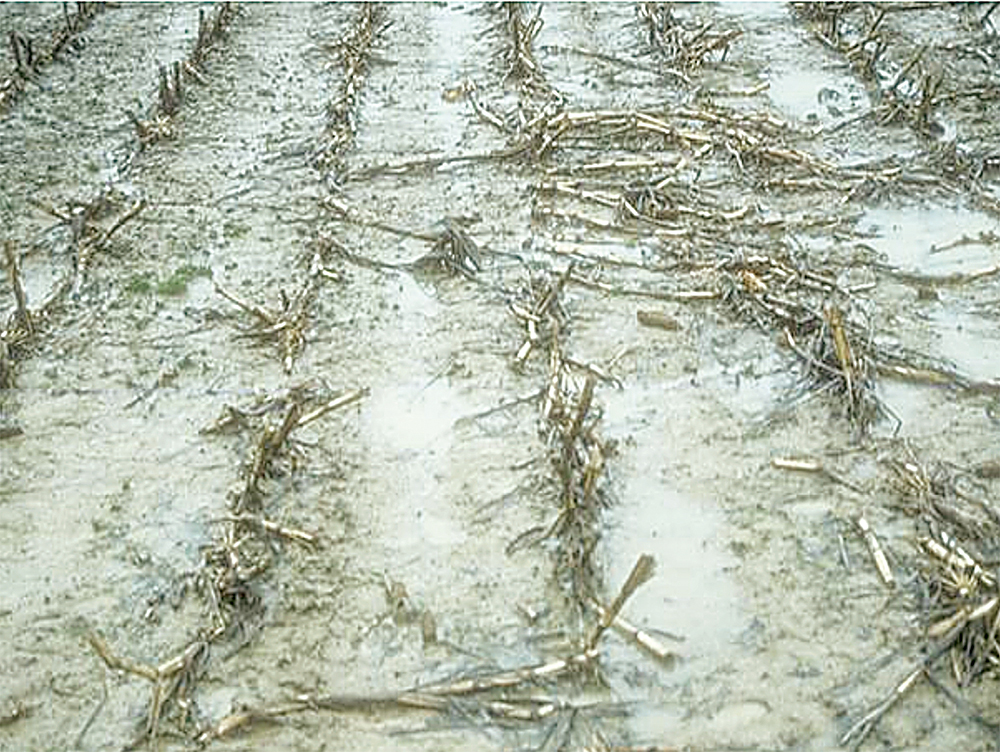
If the entire field requires drainage and the topography is flat, the subsurface drain pipes may be installed in mostly parallel lines or in herringbone patterns (Figure 17.17). On undulating lands, drain lines need to account for the field hydrology where water collects in swales and other low-lying areas. These are called targeted drainage patterns. Interceptor drains may be installed at the bottom of slopes to remove excess water from upslope areas.
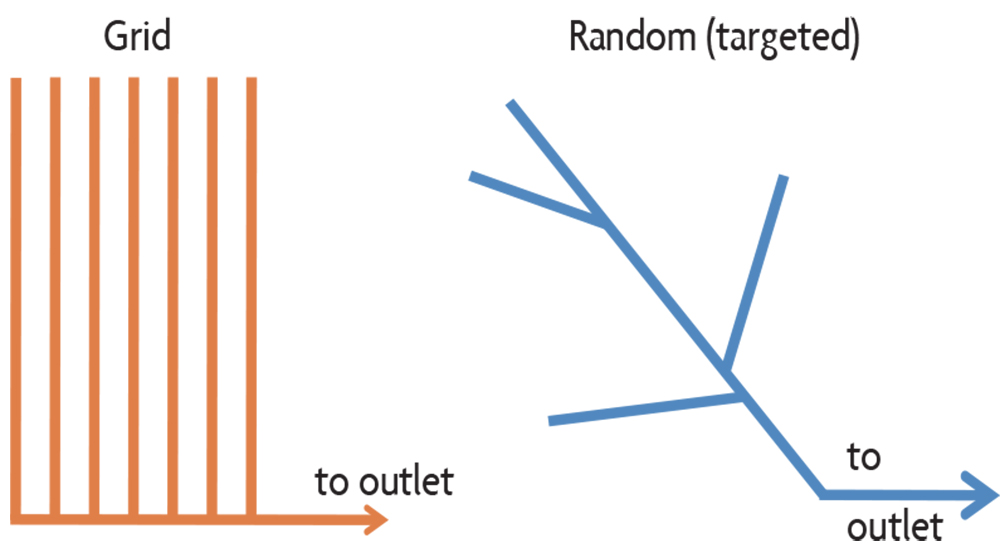
Fine-textured soils are less permeable than coarse-textured ones and require closer drain spacing to be effective. A common drain spacing for a fine loam is 50 feet, while in sandy soil, drain pipes may be installed at 100-foot spacing, which is considerably less expensive. Installing conventional drains in heavy clay soils is often too expensive, especially in developing countries, due to the need for close drain spacing. But alternatives can be used. Mole drains are developed by pulling a tillage-type implement with a large “bullet” through soil in the plastic state at approximately 2 feet of depth (figures 17.15a and 17.18). The implement cracks the overlying drier surface soil to create water pathways. The bullet creates a drain hole, and an expander smears the sides to give it more stability. Such drains are typically effective for several years, after which the process needs to be repeated. Like PVC drains, mole drains discharge into ditches at the edge of fields.
Clay soils may also require surface drainage, which involves shaping the land to allow water to discharge over the soil surface to the edge of fields, where it can enter a grass waterway (Figure 17.19). Soil shaping is also used to smooth out localized depressions where water would otherwise accumulate and remain ponded for extended periods of time.
COMMON TYPES OF DRAINAGE PRACTICES USED IN AGRICULTURE
- Ditches
- Subsurface drain lines (tile)
- Mole drains
- Surface drains
- Raised beds and ridges
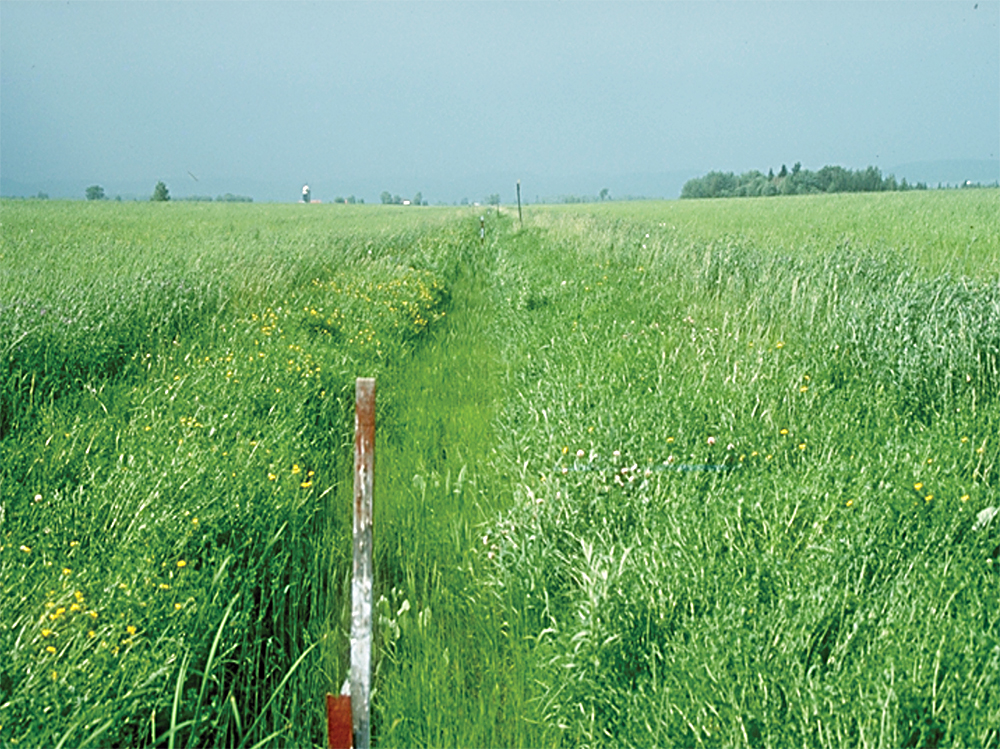
A very modest system of drainage involves the use of ridges and raised beds, especially on fine-textured soils. This involves limited surface shaping, in which the crop rows are slightly raised relative to the inter-rows. This may provide a young seedling with enough aeration to survive through a period of excessive rainfall. These systems may also include reduced tillage—ridge tillage involves minimal soil disturbance—as well as controlled traffic to reduce compaction (chapters 15 and 16).
Concerns with Drainage
Extensive land drainage has created concerns, and many countries are now strictly controlling new drainage efforts. In the United States, the 1985 Food Security Act contains the so-called Swampbuster provision, which mostly eliminated conversion of wetlands to cropland and has since been strengthened. The primary justification for such laws was the loss of wetland habitats and landscape hydrological buffers.
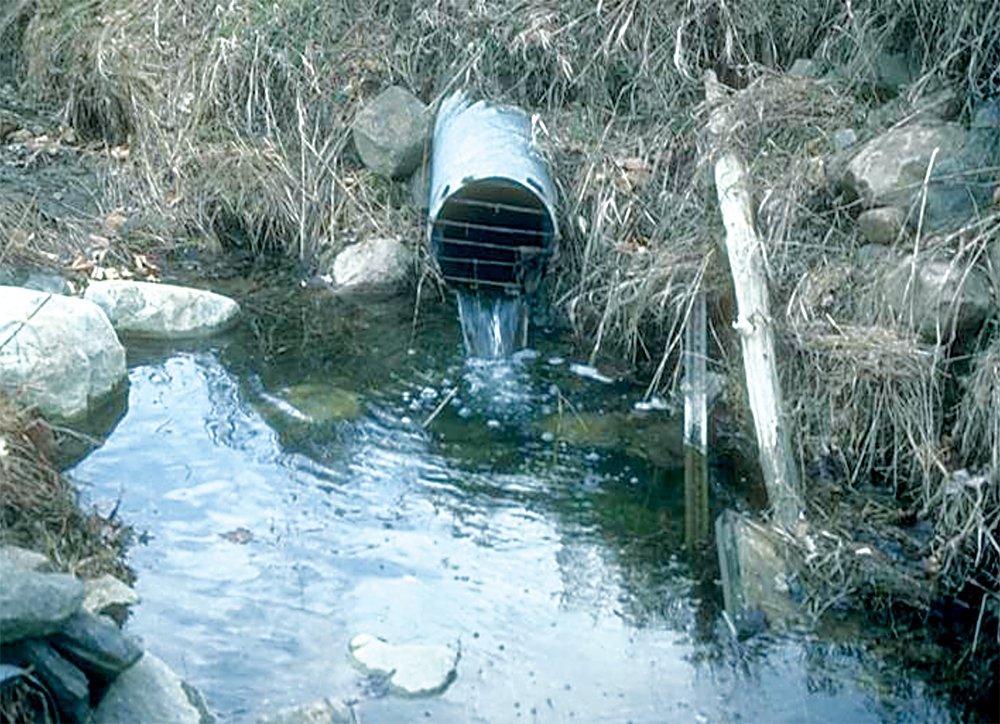
Large areas of wetlands are commonly found in those zones where water and sediments converge (as we discussed in Chapter 1) and these are among the richest natural habitats due to their high organic matter contents. They are critical to many animal species and also play important roles in buffering the hydrology of watersheds. During wet periods and snowmelt they fill with runoff water from surrounding areas, and during dry periods they receive groundwater that resurfaces in a lower landscape position. The retention of this water in swamps reduces the potential for flooding in downstream areas and allows nutrients to be cycled into aquatic plants and stored as organic material. When the swamps are drained, these nutrients are released by the oxidation of the organic materials and are mostly lost through the drainage system into watersheds. The extensive drainage of glacially derived pothole swamps in the north central and northeastern United States and Canada has contributed to significant increases in flooding and losses of nutrients into watersheds.
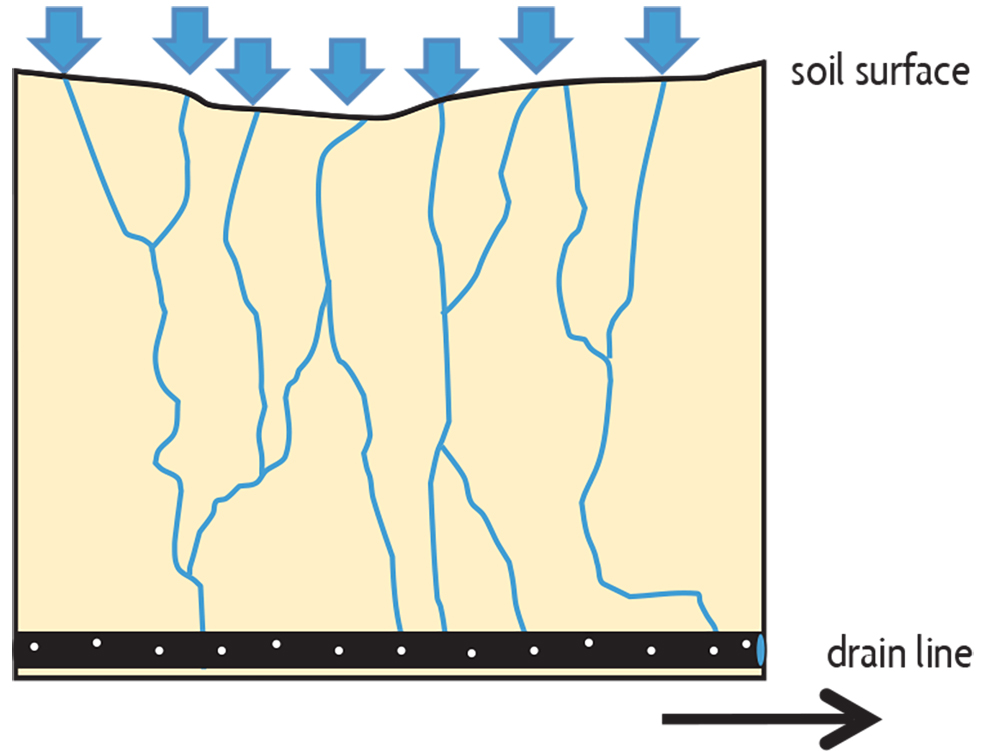
Drainage systems also increase the potential for losses of nutrients, pesticides and other contaminants by providing a hydrologic shortcut for percolating waters. While under natural conditions water would be retained in the soil and slowly seep to groundwater, it is captured by drainage systems and diverted into ditches, canals, streams, lakes and estuaries (Figure 17.20). This is especially a problem when medium- and fine- textured soils generally allow for very rapid movement of surface-applied chemicals to subsurface drain lines (Figure 17.21). Unlike sands, which can effectively filter percolating water, fine-textured soils contain structural cracks and large (macro) pores down to the depth of a drain line. Generally, we would consider these to be favorable because they facilitate water percolation and aeration. However, when application of fertilizers, pesticides or liquid manure is followed by significant precipitation, especially intense rainfall that causes short-term surface ponding, these contaminants can enter the large pores and rapidly (sometimes within one hour) move to the drain lines. These contaminants can enter drains and surface waters at high concentrations (Figure 17.22), bypassing the soil matrix and not filtered or adsorbed by soil particles. Management practices can be implemented to reduce the potential for such losses (see the box “To Reduce Rapid Chemical and Manure Leaching to Drain Lines”).
TO REDUCE RAPID CHEMICAL AND MANURE LEACHING TO DRAIN LINES
- Build soils with a crumb structure that readily absorbs rainfall and reduces the potential for surface ponding.
- Avoid applications on wet soils (with or without artificial drainage) or prior to heavy rainfall.
- Inject or incorporate applied materials. Even modest incorporation reduces flow that bypasses the mass of the soil.
Use the “4R” management practices to optimize timing, rates, formulations and placement of nutrients (see Chapter 18).
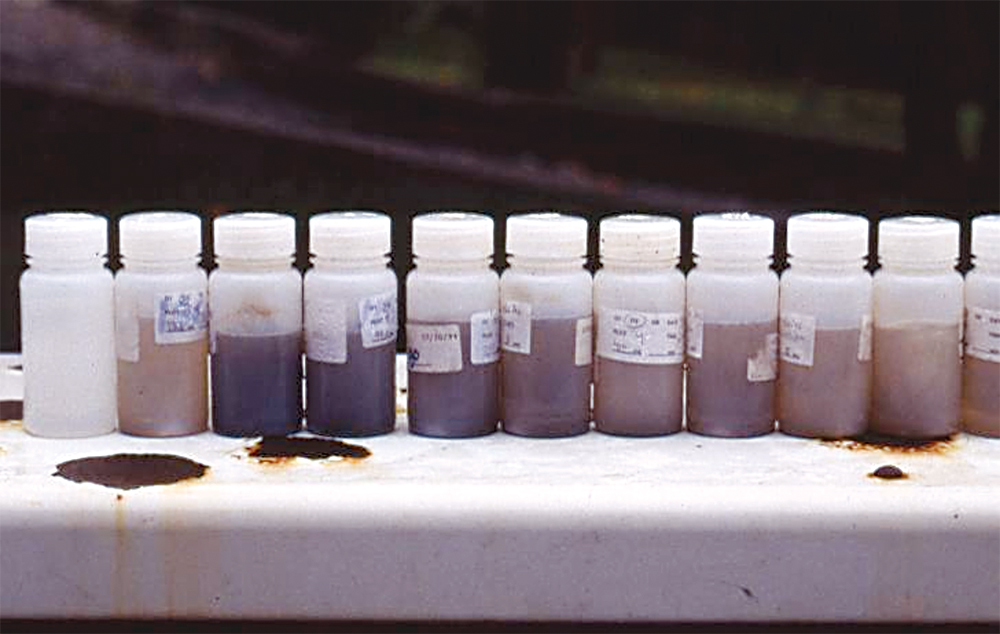
Artificially draining the soil profile also reduces the amount of water stored in the soil and the amount of water available for a crop. Farmers strive to cover all their bases when it comes to weather by draining water out of the soil in case of excess rain but retaining it in case of drought. Controlled drainage allows for some flexibility and involves retention of water in the soil system through the use of weirs in the ditches at the sides of fields. In effect, this mostly keeps the water table at a higher level than the depth of the drains, but the weir can be lowered in case the soil profile needs to be drained to deeper depths. Controlled drainage is also recommended during winter fallows to slow down organic matter oxidation in muck (organic) soils and to reduce nitrate leaching in sandy soils.
Chapter 17 Summary
Irrigation and drainage allow for high yields in areas that otherwise have water shortages or excesses. There is no doubt that we need such water management practices to secure a food supply for a growing population and to provide the high yields needed to arrest the conversion of natural lands into agriculture. Some of the most productive lands use drainage or irrigation, and the ability to control water regimes provides great advantages. Yet there is a larger context: These practices exact a price on the environment by diverting water from its natural course and increasing the potential for soil and water contamination. Good management practices can be used to reduce the impacts of altered water regimes. Building healthy soils is an important component of making soil and water management more sustainable by reducing the need for irrigation and drainage. In addition, other practices that promote more judicious use of water and chemical inputs help reduce environmental impacts.
Chapter 17 Sources
Bowles, Timothy M., Maria Mooshammer, Yvonne Socolar, et al. 2020. Long-Term Evidence Shows that Crop-Rotation Diversification Increases Agricultural Resilience to Adverse Growing Conditions in North America. One Earth 2: 1–10.
Geohring, L.D., O.V. McHugh, M.T. Walter, et al. 2001. Phosphorus transport into subsurface drains by macropores after manure applications: Implications for best manure management practices. Soil Science 166: 896–909.
Geohring, L.D. and H.M. van Es. 1994. Soil hydrology and liquid manure applications. In Liquid Manure Application Systems: Design, Management, and Environmental Assessment. Publication no. 79. Natural Resource, Agricultural, and Engineering Service: Ithaca, NY.
Hudson, B.E. 1994. Soil organic matter and available water capacity. Journal of Soil and Water Conservation 49: 189–194.
McKay, M. and D.S. Wilks. 1995. Atlas of Short-Duration Precipitation Extremes for the Northeastern United States and Southeastern Canada. Northeast Regional Climate Center Research Publication RR 95-1, 26 pp. Also accessible at http://www.nrcc. cornell.edu/pptext/.
Martinez-Feria, Rafael A. and Bruno Basso. 2020. “Unstable crop yields reveal opportunities for site-specific adaptations to climate variability.” Science Reports 10, 2885.
Moebius, B.N., H.M. van Es, J.O. Idowu, R.R. Schindelbeck, D.J. Clune, D.W. Wolfe, G.S. Abawi, J.E. Thies, B.K. Gugino and R. Lucey. 2008. Long-term removal of maize residue for bioenergy: Will it affect soil quality? Soil Science Society of America Journal 72: 960–969.
Montgomery, D. 2007. Dirt: The Erosion of Civilizations. University of California Press: Berkeley, CA.
Siebert, S., P. Döll, J. Hoogeveen, J-M. Faures, K. Frenken and S. Feick. 2005. Development and validation of the global map of irrigation areas. Hydrology and Earth System Sciences 9: 535–547.
Sullivan, P. 2002. Drought resistant soil. Agronomy Technical Note. Appropriate Technology Transfer for Rural Areas. National Center for Appropriate Technology: Fayetteville, AR.van Es, H.M., T.S. Steenhuis, L.D. Geohring, J. Vermeulen and J. Boll. 1991. Movement of surface-applied and soil-embodied chemicals to drainage lines in a well-structured soil. In Preferential Flow, ed. T.J. Gish and A. Shirmohammadi, pp. 59–67. American Society of Agricultural Engineering: St. Joseph, MI.
